The Best Cenotes Near Puerto Aventuras, Playa del Carmen and Akumal
Table of Contents
- 1 The Best Cenotes Near Puerto Aventuras, Playa del Carmen and Akumal
- 2 What is a cenote?
- 3 How are cenotes formed?
- 4 Are there different types of cenotes?
- 5 How many cenotes are there?
- 6 What kinds of animals live in cenotes?
- 7 What to bring to a cenote?
- 8 What are the best cenotes near Puerto Aventuras?
- 9 The Best Cenotes Near Puerto Aventuras
The Riviera Maya is known for its mystical and breathtaking cenotes and no holiday would be complete without exploring at least one. The moment you break through the jungle and see the crystal clear water through the greenery, shimmering with a million shades of blue…turquoise, aquamarine, cerulean…you will understand immediately why the ancient Maya revered these sites and considered them sacred.
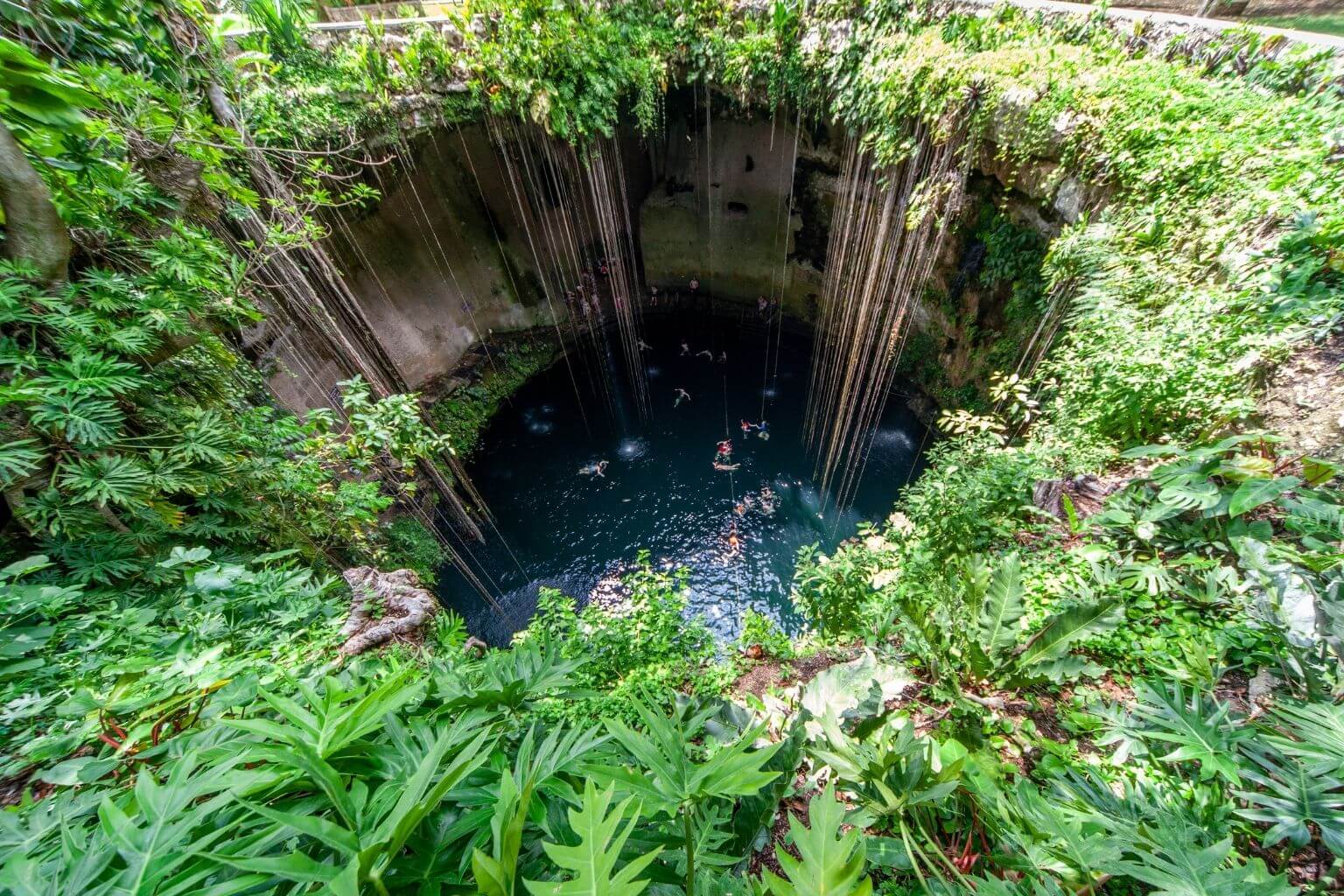
The water in the cenotes is a consistent 24°/25° Celsius (77° Fahrenheit) year-round. It’s significantly cooler than the ocean but comfortable for swimming and makes for a welcome relief from the hot Caribbean sun, especially during the summer months.
The Riviera Maya is actually home to the world’s second-longest underground cave system, the “Sistema Sac Actun”. This remarkable network of underground rivers, cenotes and caves measures 368 kilometers in length and plunges 120 meters at its deepest spot. There are nearly 200 cenotes attributed to this one system alone.
While there are many cenotes on the Riviera Maya, not all are meant for the casual visitor. Some cenotes are only geared for cave diving and for this, you will need to hire a guide and have the proper dive certifications. Cavern and cave diving can be quite dangerous and require a set of additional skills. It is essential that your guide is certified for cave diving and that you have received the proper training before you go.
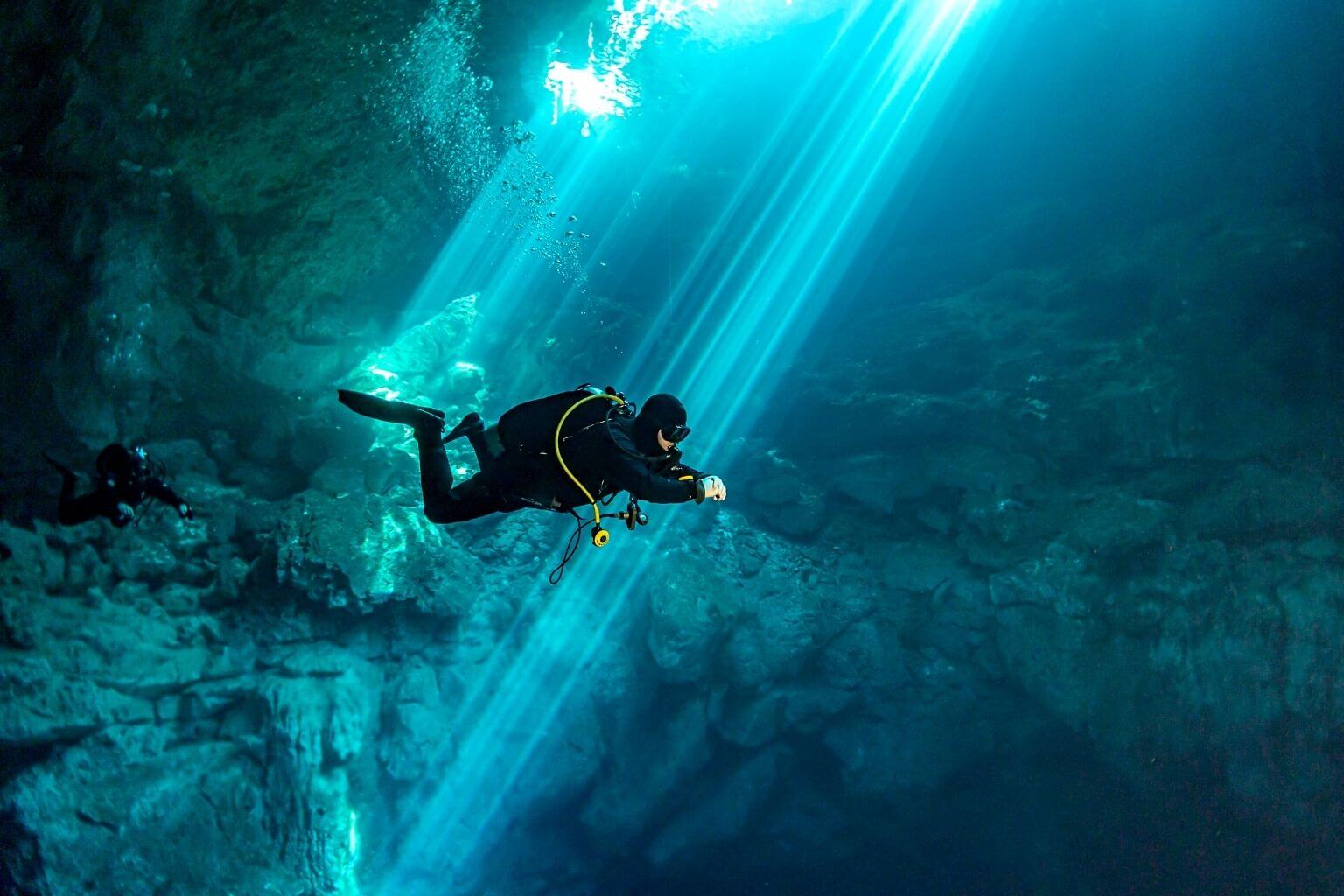
Some of the best Riviera Maya cenotes are located close to Puerto Aventuras and are very easy to visit in the morning or the afternoon. Some are situated in clusters and it’s possible to visit more than one a day. Many of these cenotes are located just off Highway 307 in the stretch between Puerto Aventuras and Tulum. Going to a cenote is a very popular activity for visitors and locals alike. If you go on a Sunday you may find yourself sharing the jungle with several hundred other people! We recommend making your plans for a weekday and going early before the crowds arrive.
If you have never visited the Riviera Maya before and have never seen or heard of a cenote, here is what you need to know before you go.
What is a cenote?
Cenote (pronounced seh-NO-tay) is a Spanish word, which originates from of the Yucateca Maya, “D’zonot” meaning “well”. Simply put, a cenote is an underground cavern or cave containing water. Cenotes are created when the ceiling of the cave collapses either completely or partially, exposing the chamber and the water below. There are four main classifications of cenotes, open, semi-open, cavern and ancient.
How are cenotes formed?
The Yucatan Peninsula is essentially a limestone “shelf”. 65 million years ago the entire peninsula was submerged beneath the waters of the Caribbean and made up part of what we now know as the MesoAmerican Reef.
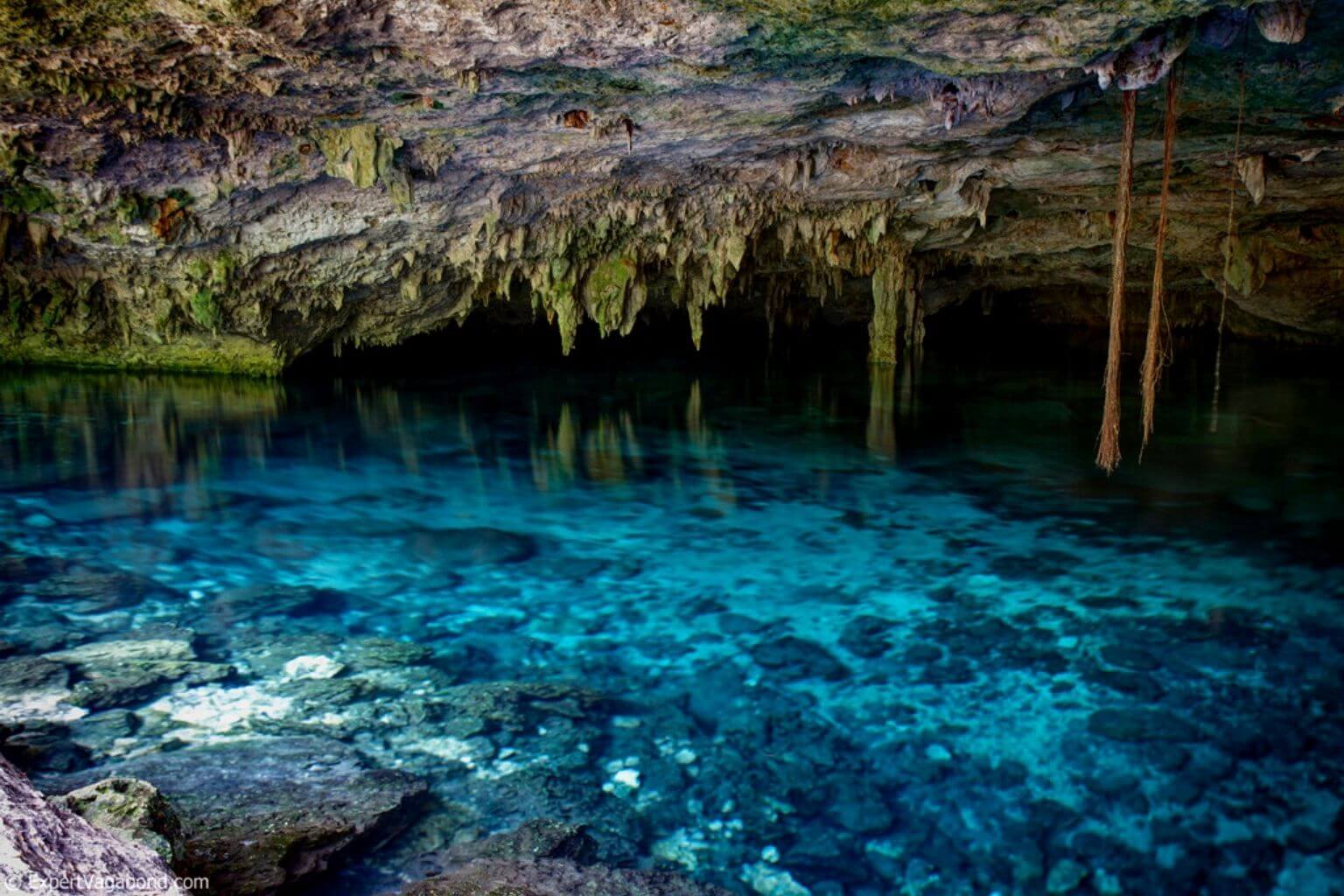
An asteroid measuring 6 miles wide crashed into the earth near what is now Chicxulub and the debris from this catastrophic event settled on top of the reef and formed the Yucatan Peninsula. Currently, this land mass is dotted with caves and sinkholes of various sizes and shapes, which help to drain rainwater from the surface into an underground system of rivers, caverns and caves and ultimately out to the sea.
The constant flow of water through a system of underground rivers, over time, causes the subterranean caverns to gradually widen. Eventually, the roof of the cavern weakens and collapses, exposing the chamber and the water below. Cenotes can also be caused by other events such as an earthquake or even construction.
Are there different types of cenotes?
There are four main classifications of cenotes, open, semi-open, cavern and ancient. Each one is classified by age and appearance. All four types of cenotes can actually be seen all at once on the Xenotes by Xcaret experience.
Ancient Cenotes
The most mature of all cenotes, ancient cenotes are distinguished by the complete lack of overhanging caverns in their structure. They may be a deep barrel shape with walls reaching straight up to the sky. Or they may look like a lagoon or small lake, surrounded by plant life right up to its edges with few if any indications of the cave that once covered it. It is only when you enter the water that you will see the walls of the cavern dropping down into the depths. Cenote Manati is an example of an ancient cenote.
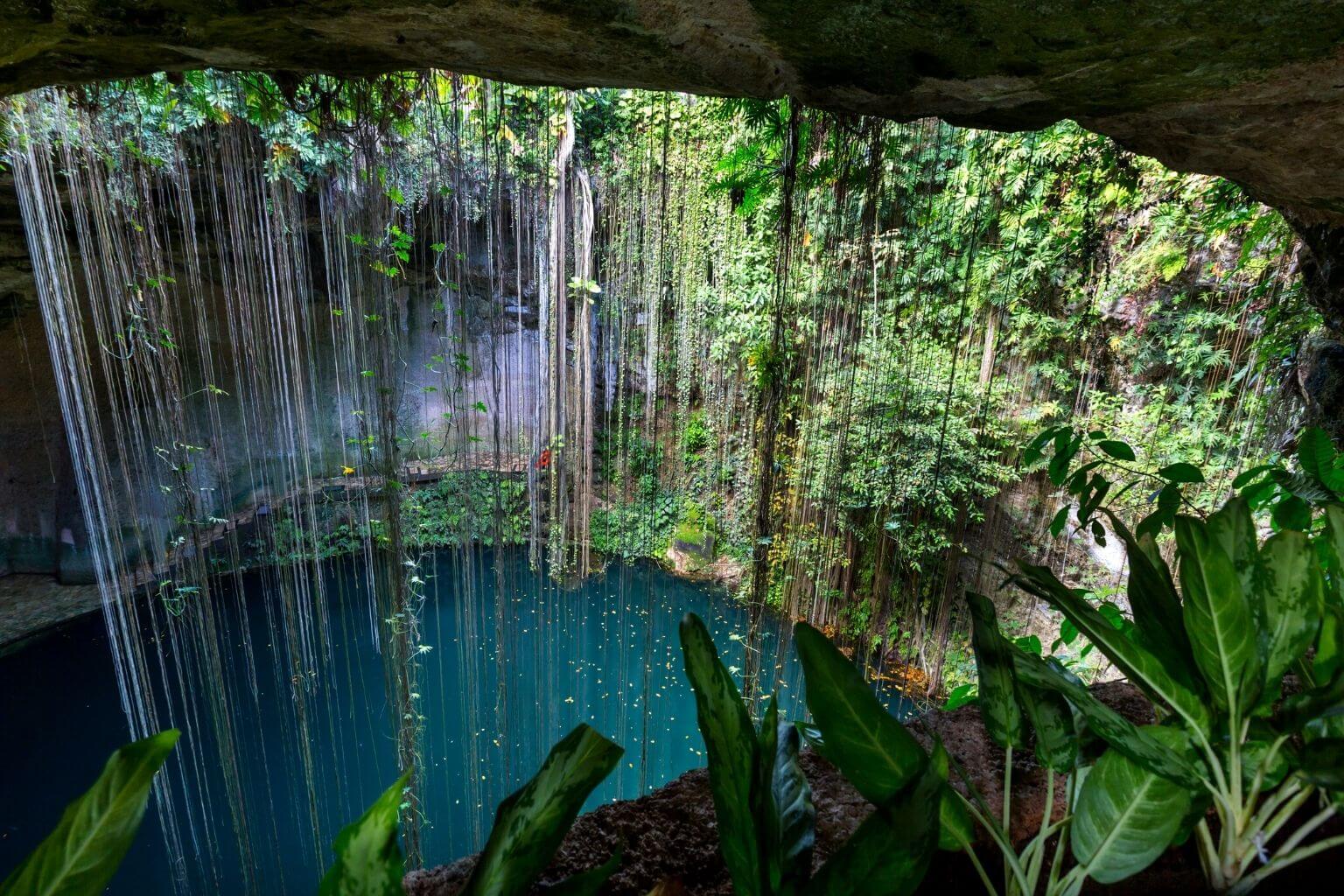
Open Cenotes
Open cenotes are natural, open pools of water. The surrounding cavern walls may be still visible in places but have collapsed fully leaving the basin of water open to the sun. Open cenotes are some of the most beautiful to visit and perfect for snorkeling. An example of an open cenote is Cenote Ponderosa.
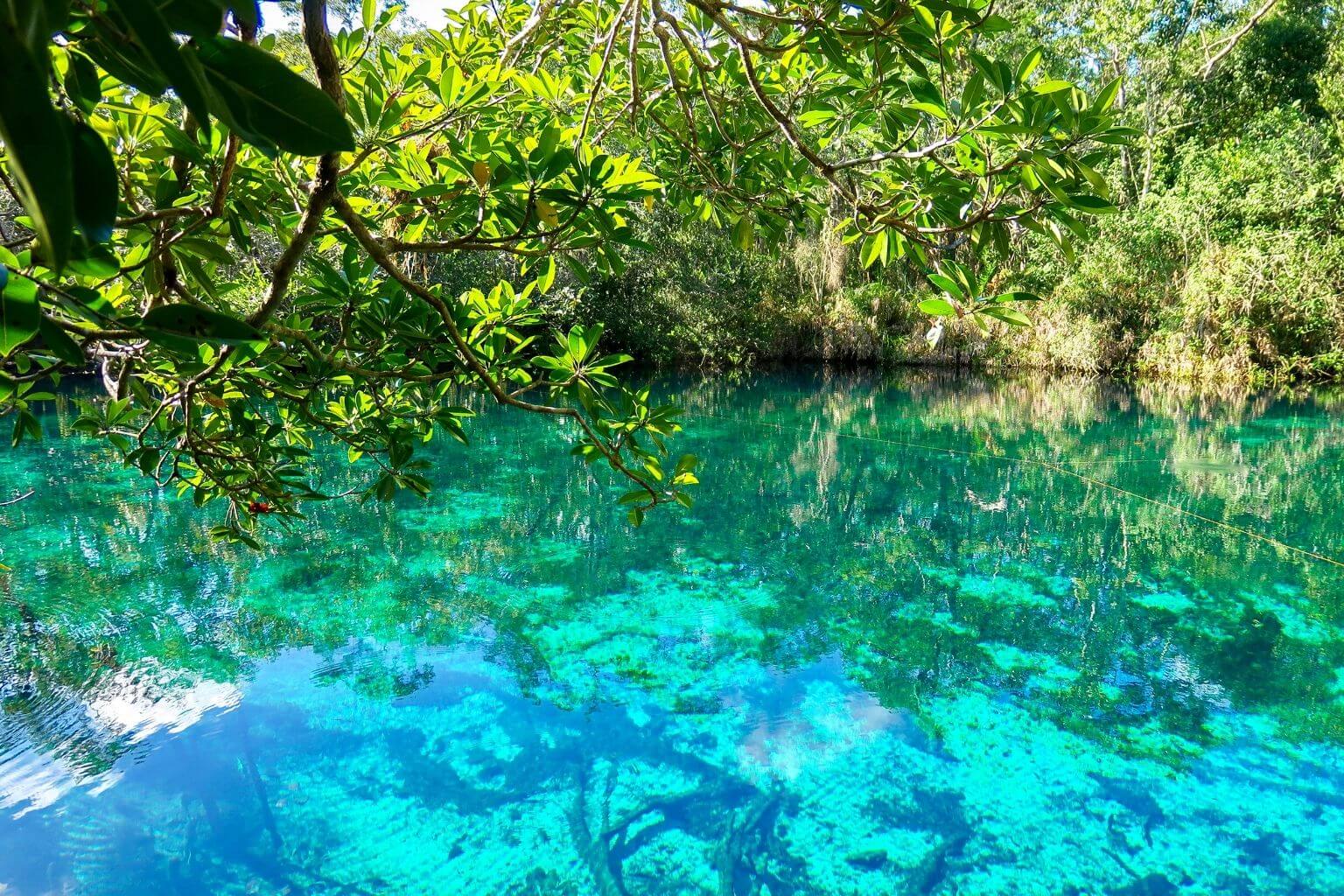
Semi-open Cenotes
As the name indicates, these cenotes are semi-open with part of the water surface hidden from view in a cavern. These are younger than open cenotes as the entire surrounding cavern has not yet collapsed in. Semi-open cenotes often attract cavern and cave divers to explore their hidden secrets. Cenote Dos Ojos is a semi-open cenote.
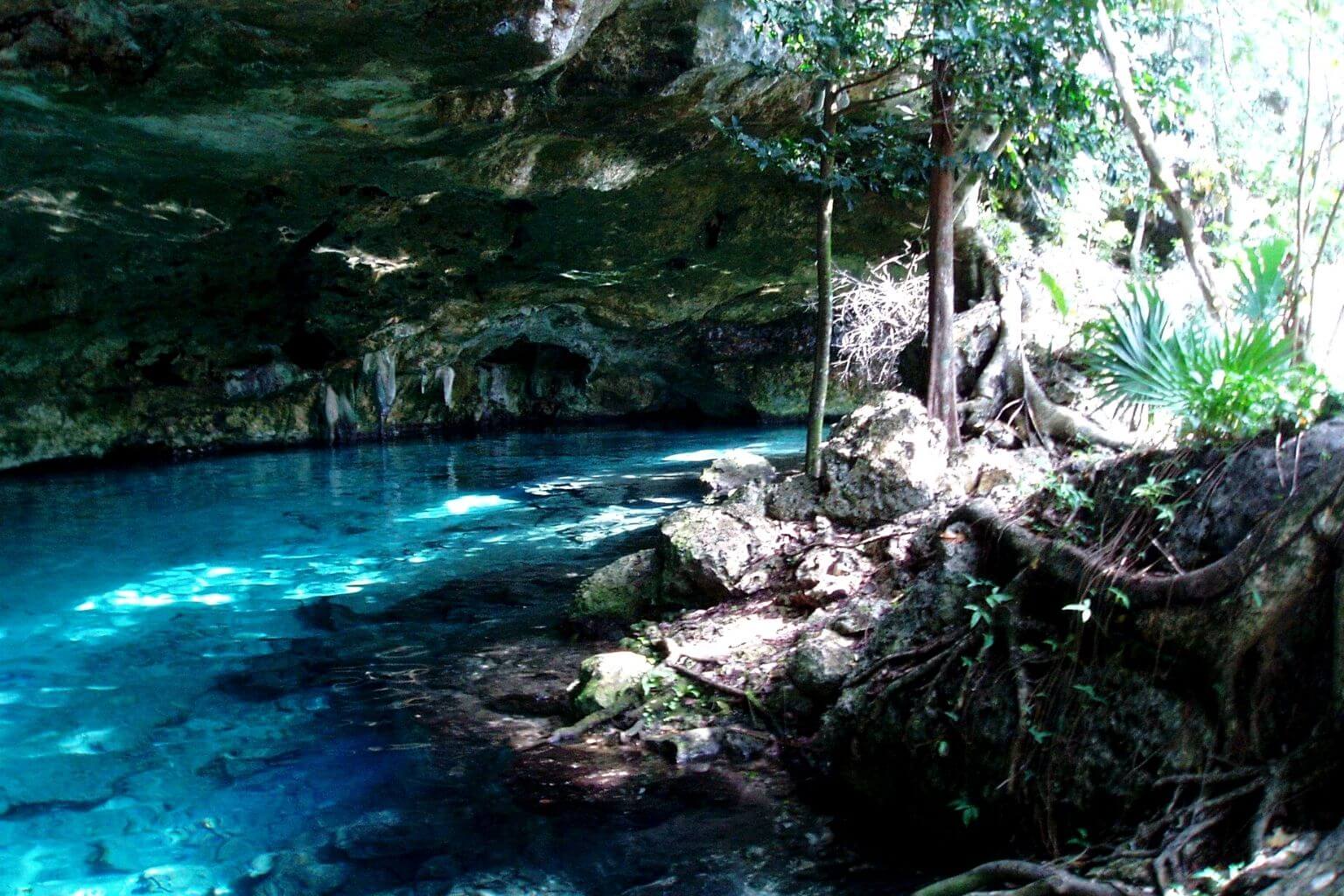
Cavern Cenotes
This is the youngest type of cenote, not readily visible from the surface and is usually reached through a small opening leading to a set of stairs or ladders. Sometimes cavern cenotes can be accessed by a tunnel. Once inside, a large underground chamber is revealed with crystal clear water at the bottom of the basin.
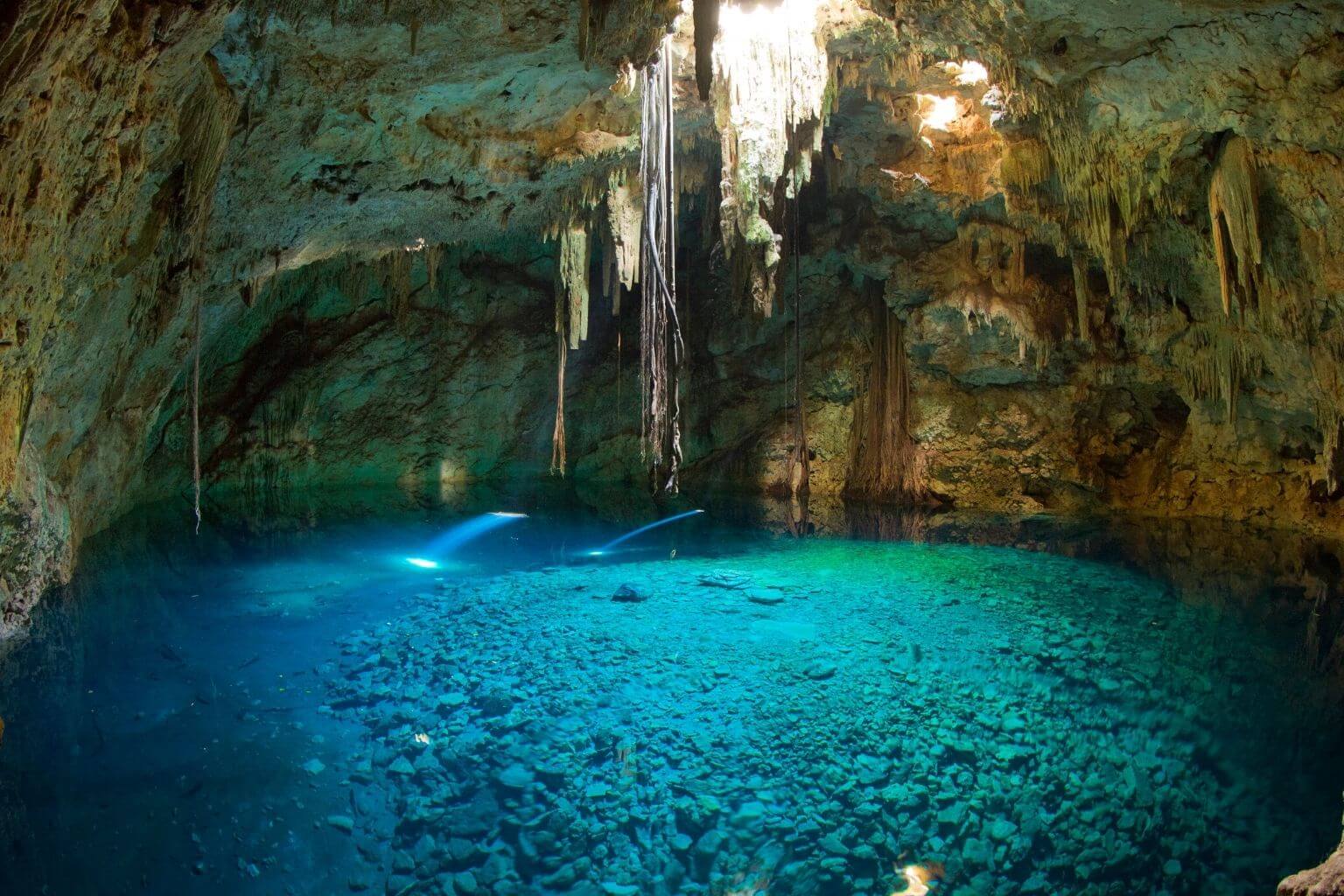
There are also underground cenotes. This type of cenote is the most difficult to access as they are not open to the surface. Underground cenotes are usually discovered by cave divers while exploring a system of sub-terrestrial rivers. Over time, these cenotes may reveal themselves but some are so deep that they will remain hidden forever.
How many cenotes are there?
There are estimated to be nearly 7000 cenotes on the Yucatan peninsula with more being discovered every day. Sinkholes similar to cenotes can be found in other parts of the world but the Yucatan Peninsula is unrivaled in the sheer number of cenotes that can be found concentrated in this relatively small geographic area. A vast number of cenotes can be found along the Riviera Maya.
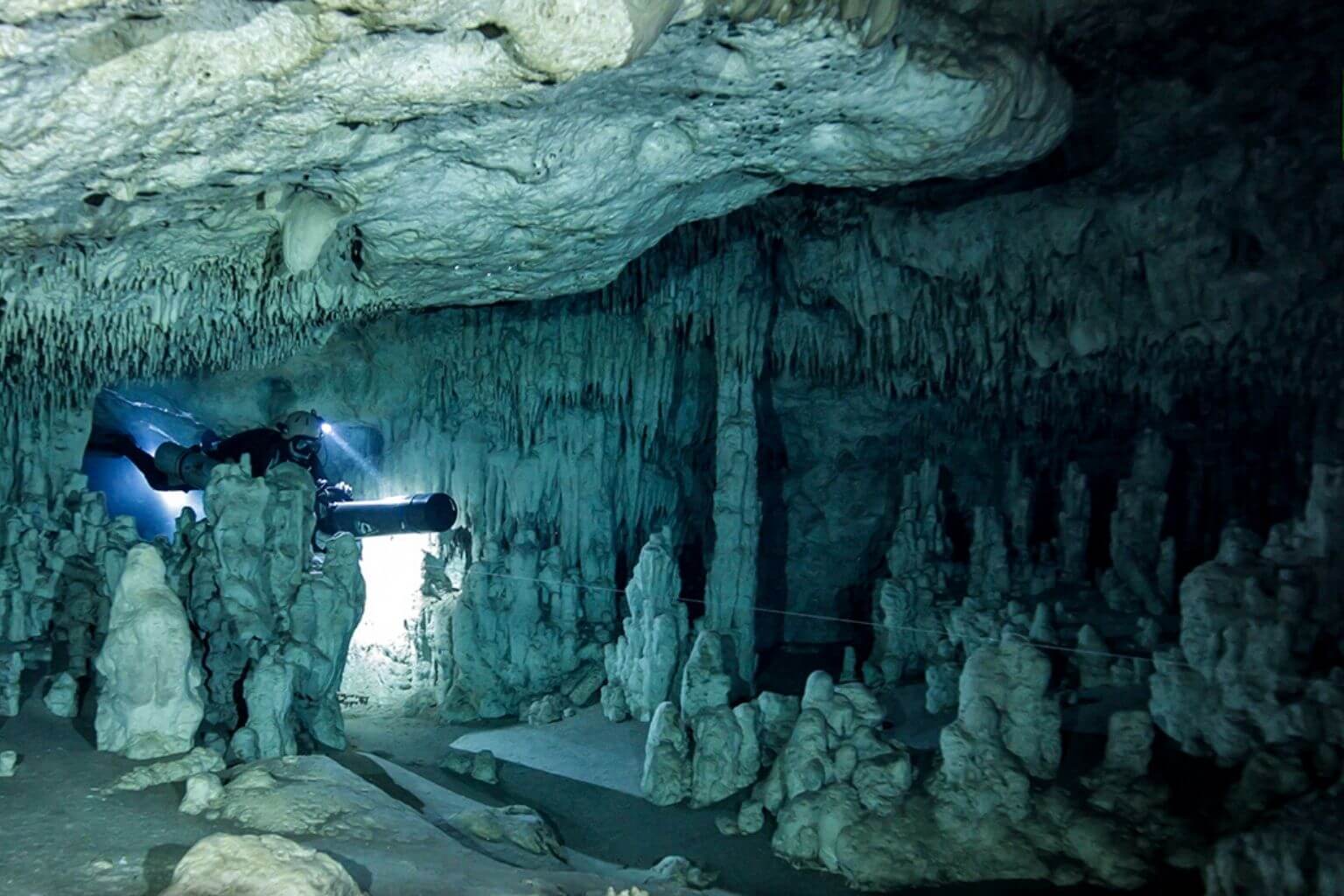
Over 200 cenotes are attributed to the “Sistema Sac Actun” located around Tulum. There are also over 900 cenotes located around the enormous crater site near Merida in a system known as the “Ring of Cenotes”.
What kinds of animals live in cenotes?
Cenotes are an essential part of the ecosystem of the Yucatan peninsula as they are a source of life-giving fresh water for humans, animals and vegetation. As such, many kinds of wildlife can be found thriving in and around cenotes. Fish such as guppies, black catfish and are commonly found in the cool waters. Turtles, frogs and lizards can also be found and even crocodiles have been known to make a large lagoon-like cenote home. Swallows make their nests in the walls and ceilings of cavern-type cenotes.
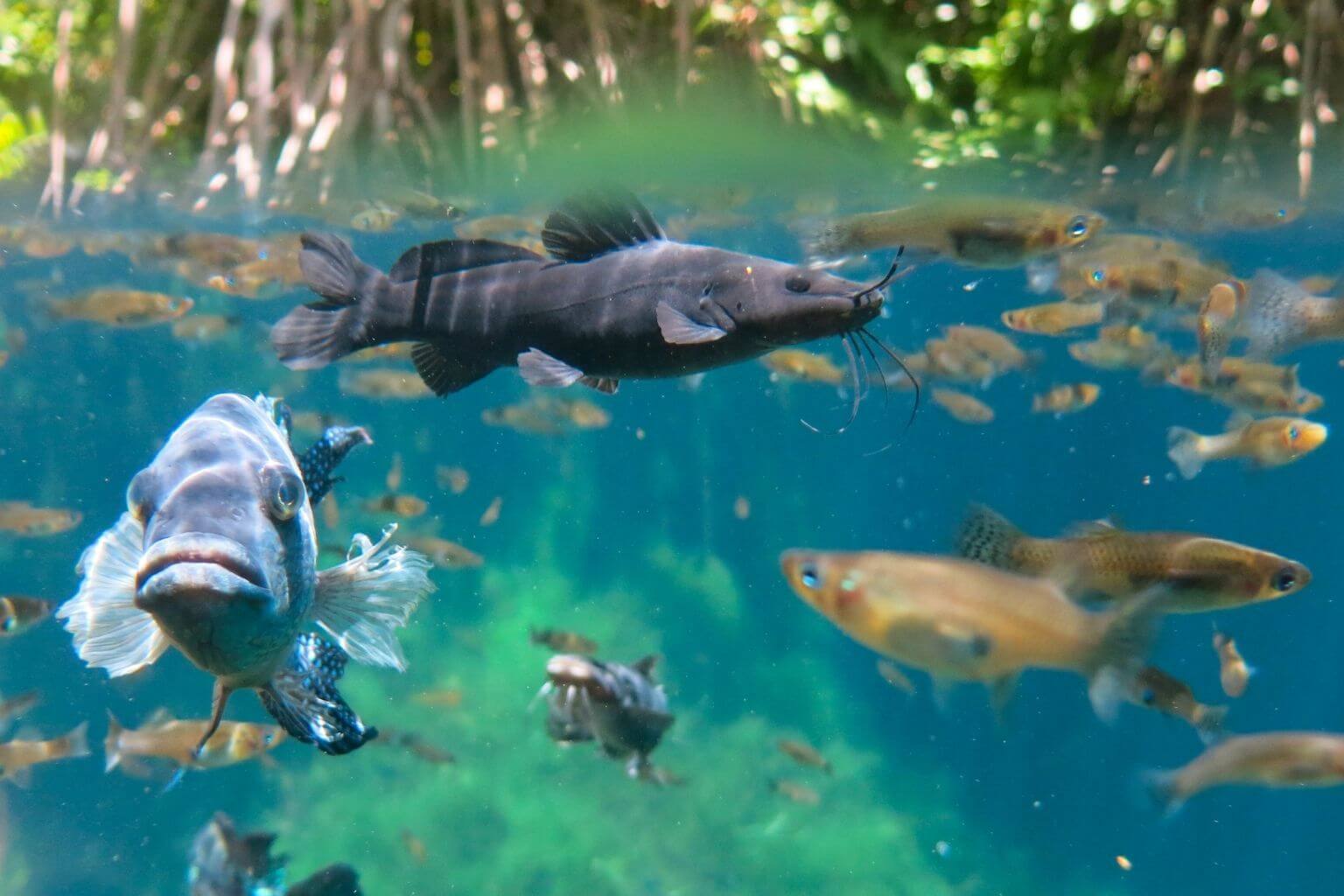
The Blue Crowned Mot Mot is known to dig their nests in the soft ground near cenotes and a sighting can be an indicator that a cenote is nearby. Cenotes also attract wildlife such as deer, jaguars, coatimundi, monkeys and many other animals indigenous to the region that come to the shores and into the caverns to drink.
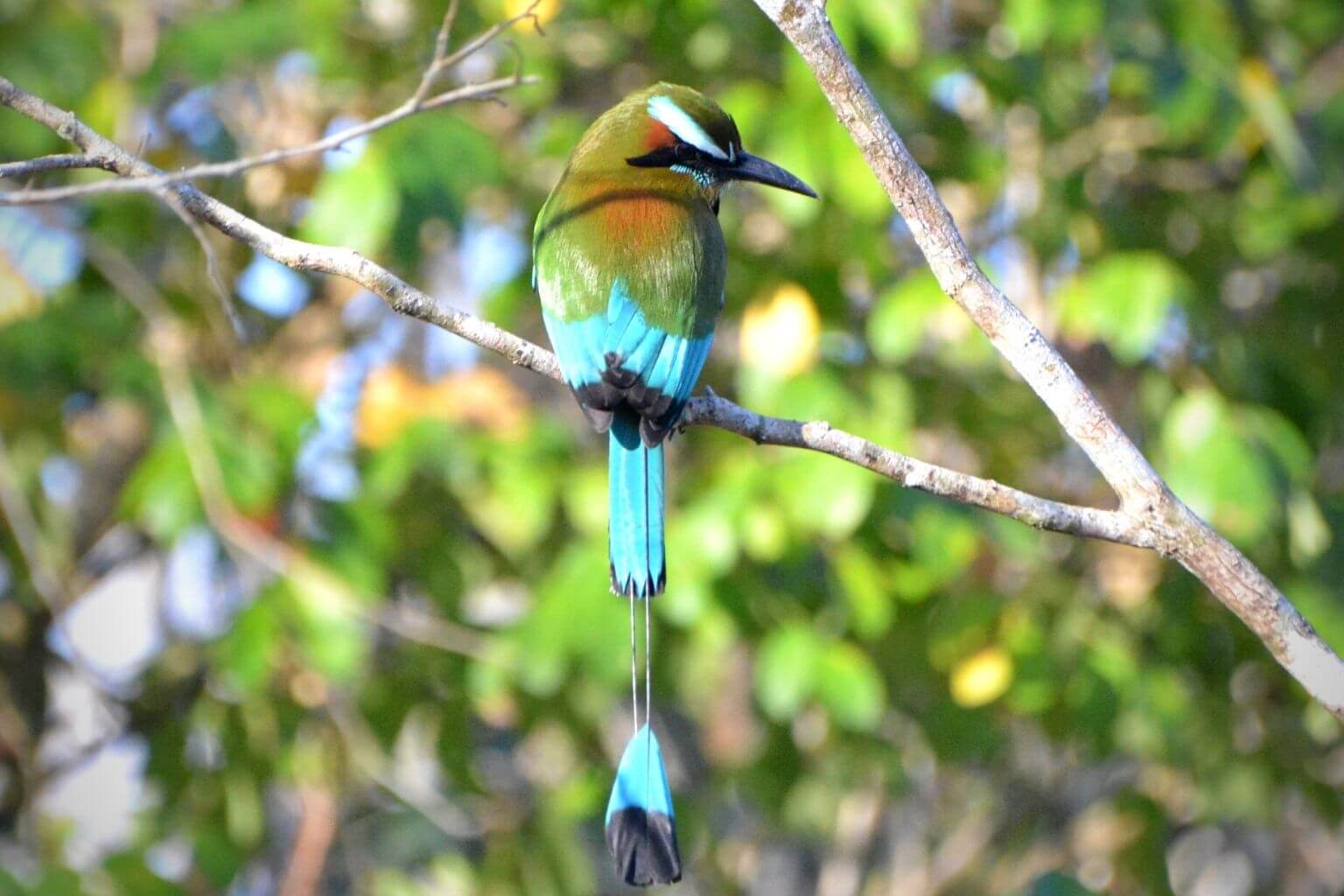
How can you visit cenotes?
There are many excellent cenote tours and eco-adventure parks built around cenotes that you can visit. Xcaret has a fantastic cenote tour aptly called Xenotes where you can visit and swim in four different cenotes. The experience also offers assisted rappelling, zip lines and kayaking and the cost includes transportation, food and drinks, a certified bilingual guide and a photographer. This is a great option if you’re traveling as a family or a group and want to make the most of your time here.
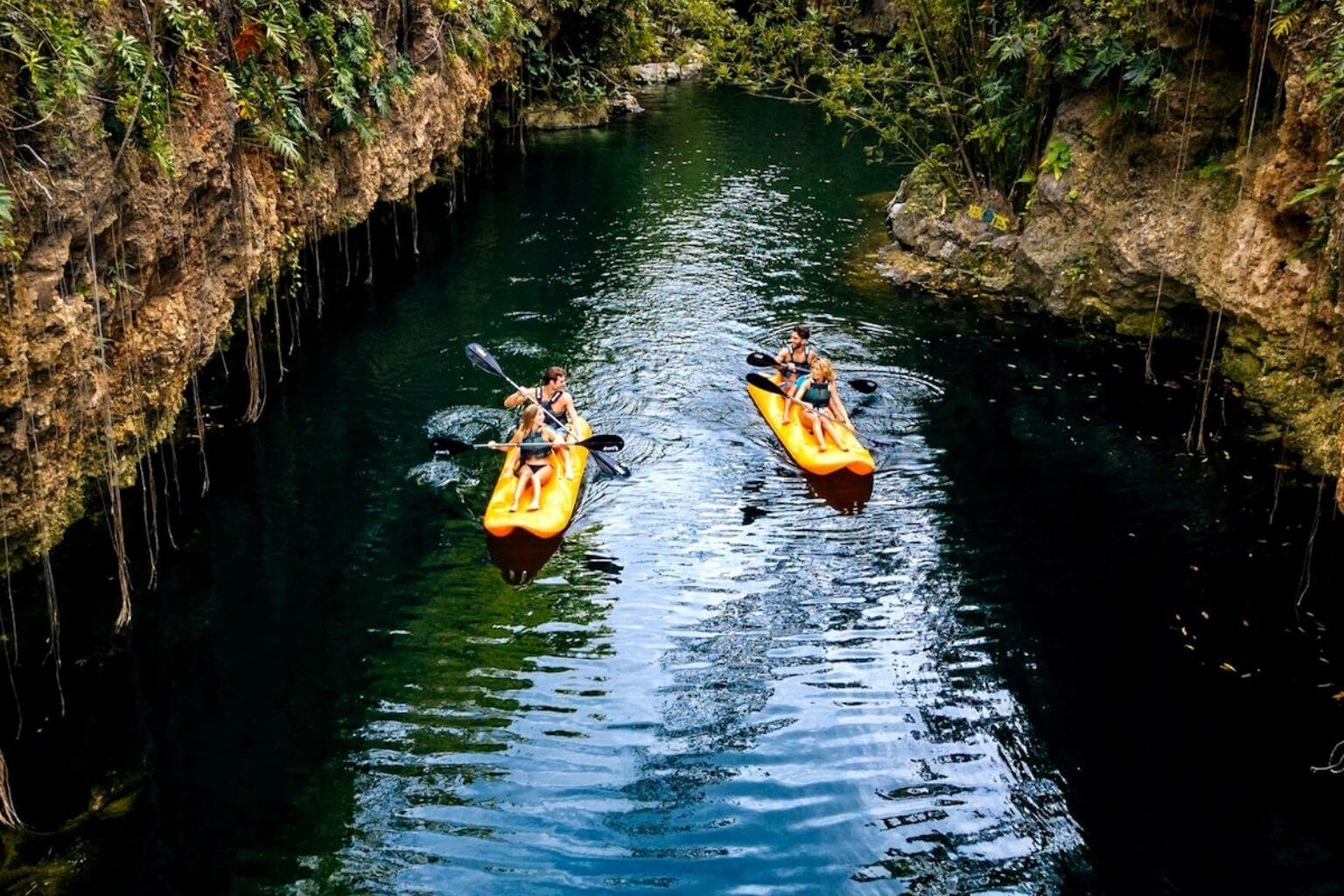
Another popular cenote experience can be found at Rio Secreto just about 15 minutes or Puerto Aventuras before you enter Playa del Carmen. Rio Secreto is one of the most mystical and spectacular underground cave cenotes on the Riviera Maya. This cave system, stretching over 7 miles long, was discovered in 2007.
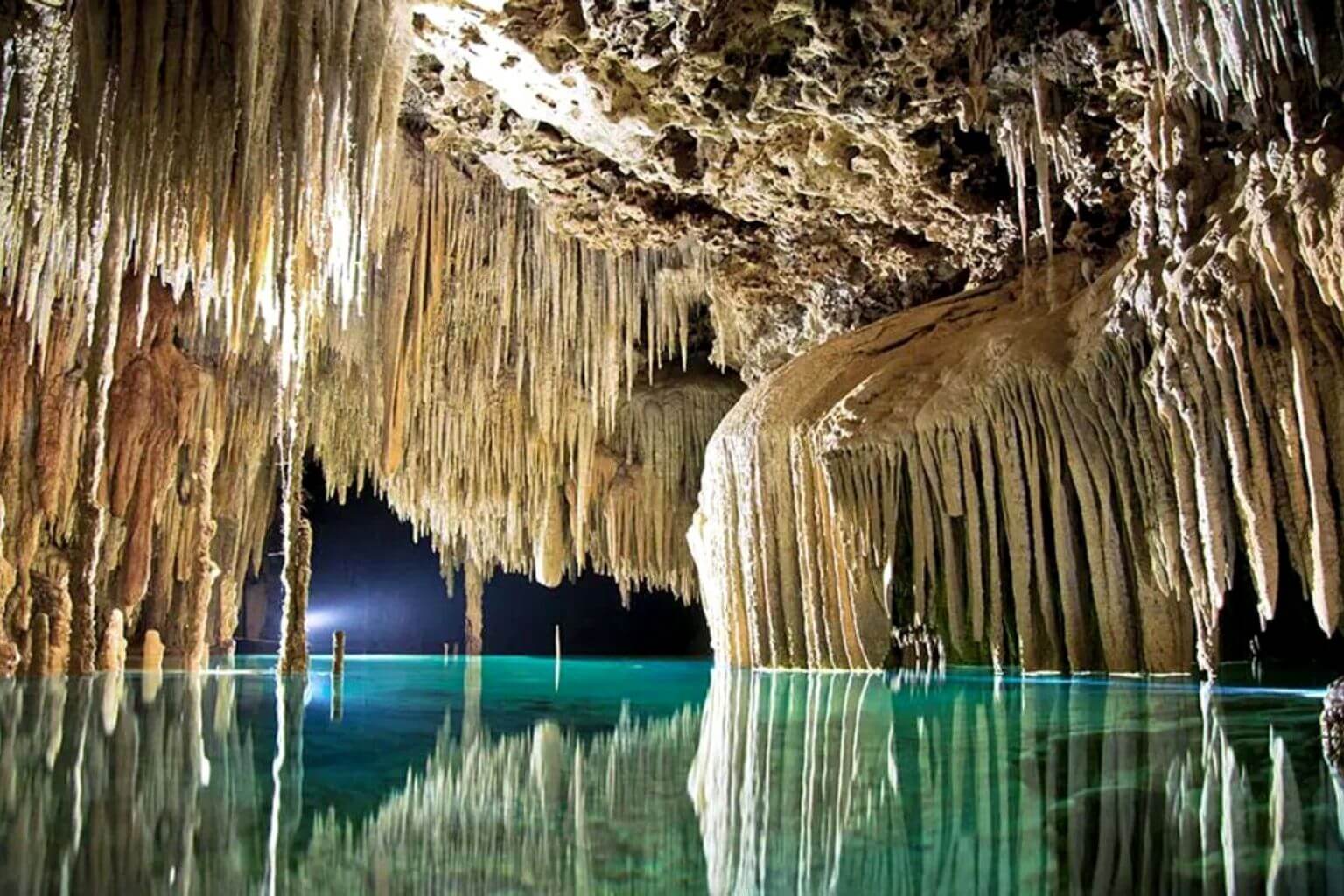
Rio Secreto Eco-park opened shortly thereafter, allowing visitors to experience this remarkable cave cenote system and its dramatic stalactite and stalagmite formations. This is a very popular and professionally run guided tour that provides an otherworldly experience that none of the other cenotes do. The price of admission included all the gear you will need, a bilingual guide and a nice buffet lunch. If budget and time allow, we highly recommend it.
There are dozens of cenotes that you can easily visit on your own with or without a guide. All are privately owned and will charge an admission fee for entry. Some sites are more accessible than others while others require more physical prowess. Some cenote sites are quite rustic. Others have more modern facilities such as bathrooms, a restaurant and snorkel gear rentals available. The cenotes on this list are all easy entry, family-friendly and are safe to swim in and snorkel.
What to bring to a cenote?
As accessibility and amenities are going to vary from cenote to cenote, you might want to come prepared. Here are a few things that we recommend you bring if you are going to visit one of these remarkable Riviera Maya cenotes.
Waterproof Sandals
Some of the cenotes require a bit of walking to get to, so you will want to wear comfortable shoes. We recommend waterproof sandals that you can wear on land and in the water in case the entry points are rocky and uneven. No need for special water shoes if you can find a pair of good-looking, comfortable sandals that are suitable for walking and waterproof. These are a great pair of Merrell sandals that I got on Amazon.
Snorkel Gear
Of course, most of the beauty of a cenote can be found below the surface of the water. You will want to be sure you have a way to see it! Some of the cenotes will provide snorkel gear but we recommend investing in a set of your own. There is nothing more frustrating than a leaky mask when you are snorkeling or diving. A well-fitting mask and snorkel will make your experience so much more enjoyable, so take the time to buy a good set and bring it along on your travels. This is a nice set of two masks and snorkels for a very reasonable price on Amazon.
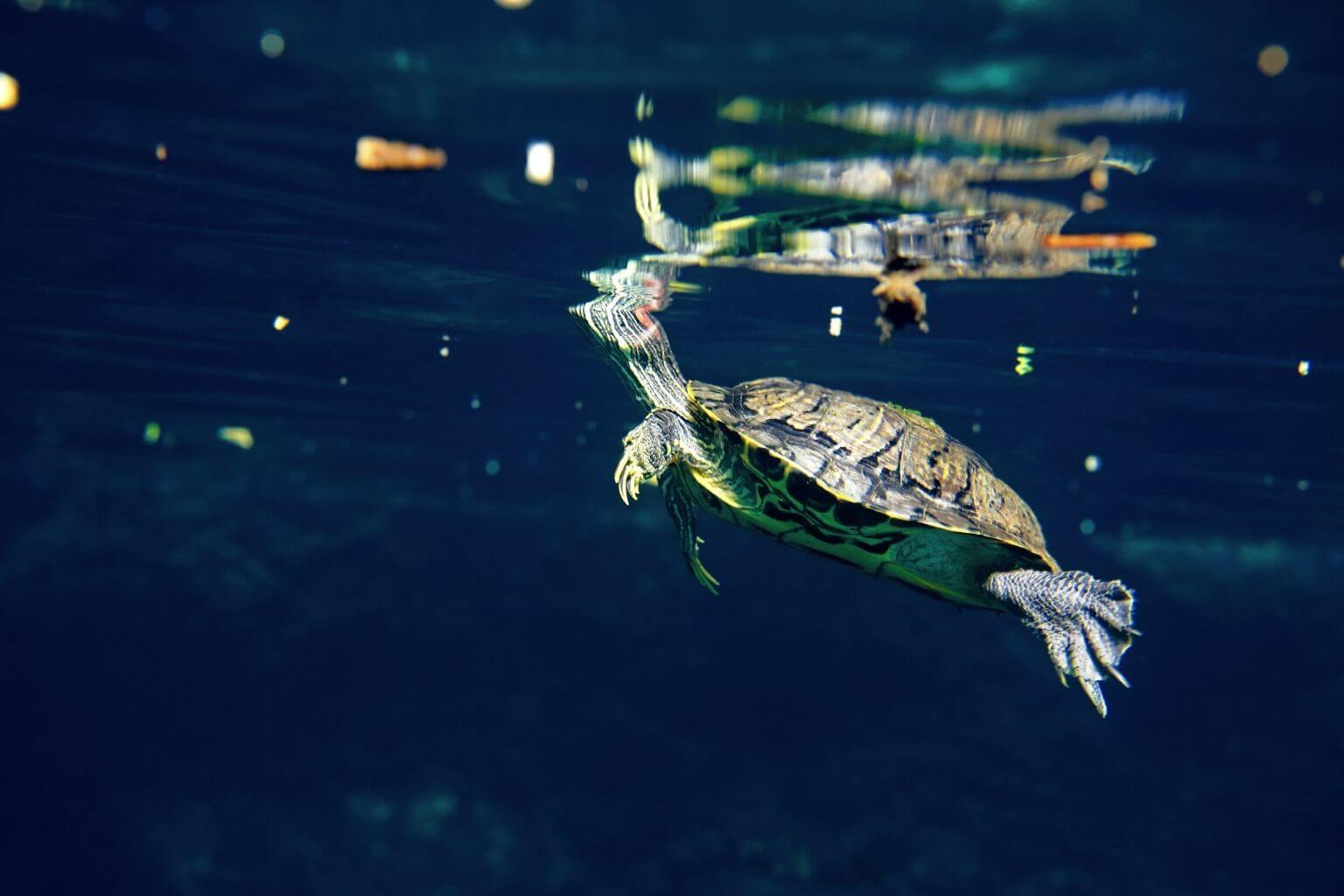
Waterproof Camera
A camera is a must for any visit to a cenote. While many people are getting amazing shots with just their phone, a good waterproof camera will let you really capture all the beauty above and below the water. There are quite a few to choose from on Amazon like this waterproof GoPro HERO10.
Insulated Bag and Water Bottle
Depending on the cenote you visit, there may or may not be any food or beverages available. A great option is to bring your own lunch and have a picnic. A small, insulated lunch bag and an insulated water bottle will keep your food cold while you are enjoying a swim or exploring the jungle. This collapsable water bottle on Amazon is pretty cool and doesn´t take up a lot of space in your suitcase.
Quick Dry Towel
You will also want to bring a small towel, just to dry off before you make the trek out and back home. It will also help protect your car seat from wet bathing suit bottoms on the way home. We like these microfibre towels because they come with a handy carrying case.
Dry Bag
Consider what kind of bag you are going to want when you are visiting cenotes. You will want something compact and waterproof or at least water-resistant to carry your gear in and out. A small dry bag can easily hold your towel, lunch, water bottle and personal belongings, and keep it all dry. These bags are also great for trips to the beach, kayaking and paddle boarding. This dry bag comes in a variety of sizes to suit a variety of needs.
Biodegradable Insect Repellent and Sunscreen
The cenotes are protected spaces and some do not allow sunscreen or insect repellent. Regardless, you should always be using biodegradable and reef-safe sunscreen and repellent whenever you are swimming, either in a cenote or in the ocean. There are many to choose from but you may want to buy them before you arrive in Mexico as they are quite expensive here.
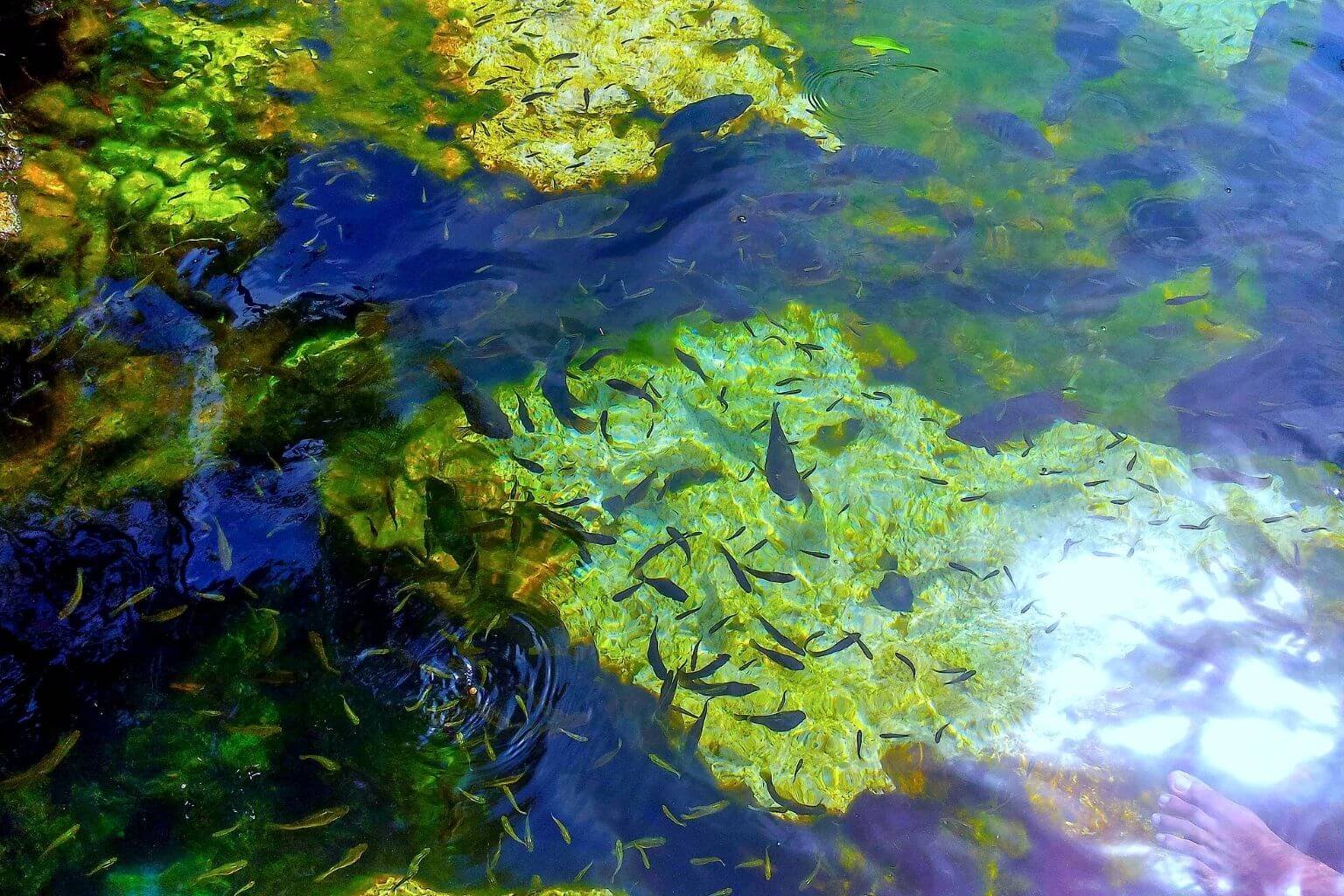
What are the best cenotes near Puerto Aventuras?
The cenotes of the Riviera Maya are all remarkable and each one is unique. It would be impossible to categorize which cenotes are “the best”. Some cenotes are more difficult to enter than others but stunningly beautiful. Others are better for small children and even non-swimmers to enjoy. Some are only accessible with a guide or on a cenote tour.
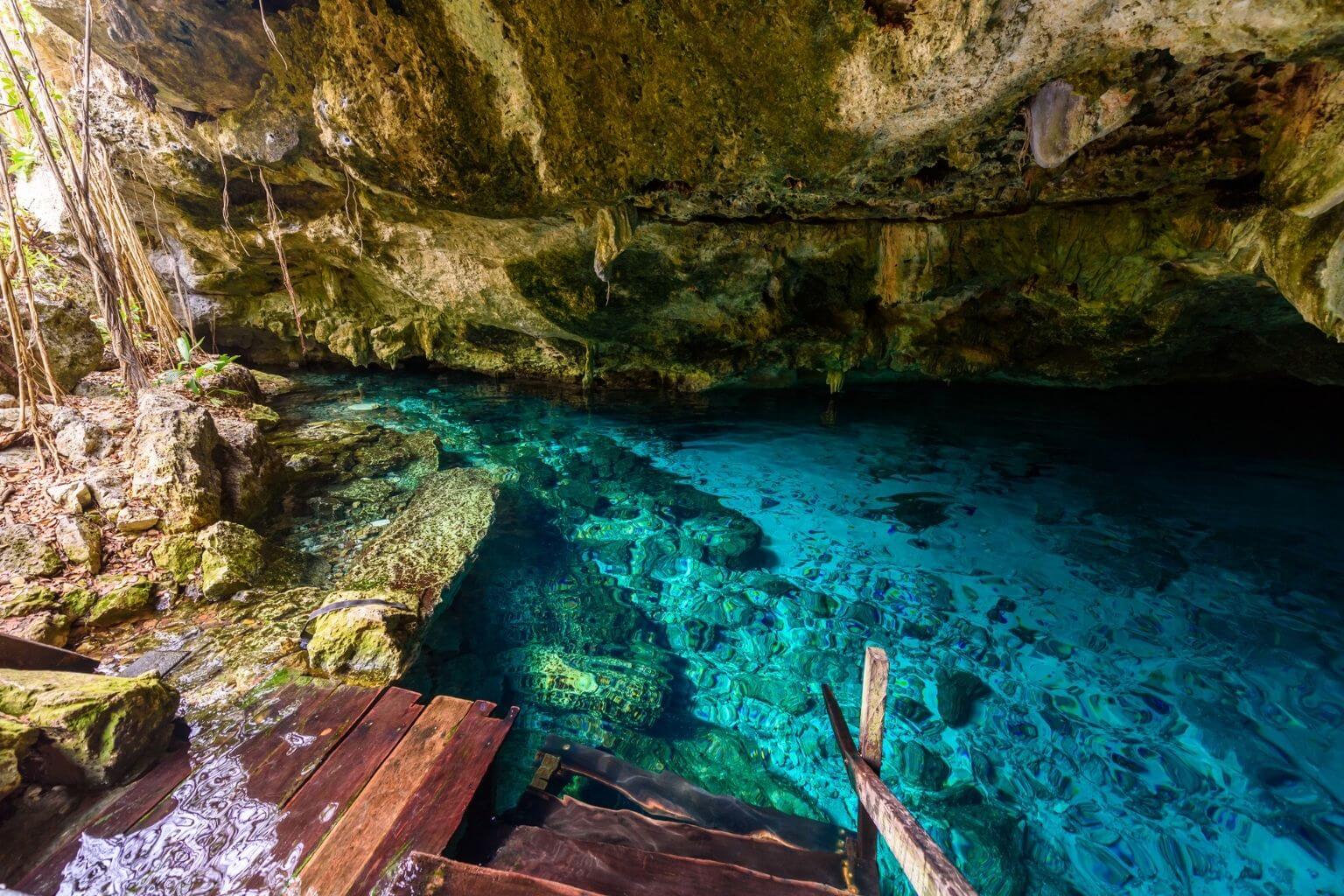
We have compiled a list of the cenotes that we think are the most memorable and easy to access from Puerto Aventuras. We have tailored this list for the casual visitor looking for a wonderful cenote experience.
Some of these sites are well organized with bathroom facilities, restaurants and equipment rentals. Others are more rustic and you will want to bring along your own gear, snacks and water. All of these you can visit on your own and will make for a day trip you won’t soon forget.
The Best Cenotes Near Puerto Aventuras
Cenote Ponderosa
Also known as Jardin del Eden, and for good reason, this is an exceptionally beautiful cenote located just a few minutes south of Puerto Aventuras.
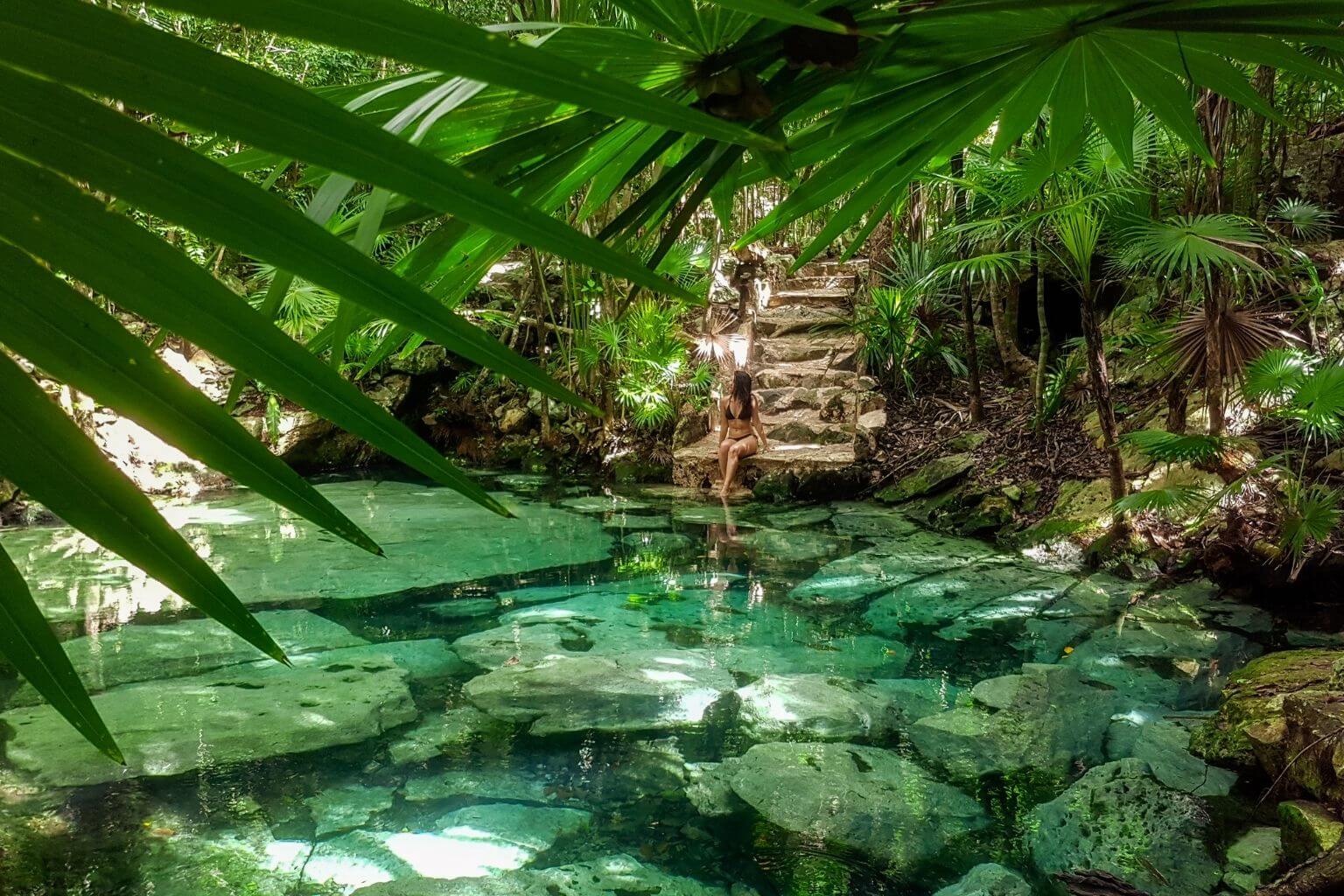
Access to the cenote is very easy with several wooden stairways leading down to platforms just above the water. There are several spots for jumping off including one 12’ ledge and an overhanging tree that can be climbed to leap from. This is one of the best cenotes for snorkeling, as you will find a wide variety of fish, turtles and spectacular aquatic plant life. More adventurous swimmers will love the swim-through cavern. This is a great place to bring snacks and beverages (non-alcoholic only) and spend an afternoon surrounded by nature. Life vest and snorkel gear rentals are available. Cenote Ponderosa is open from 9am to 5pm. Closed on Saturdays.
Cenote Cristalino
As soon as you arrive at Cenote Cristalino you will immediately understand why it is so named. Its azure waters are absolutely crystal clear offering near-perfect visibility for snorkelers. This is one of the more beautiful cenotes it is a smaller site.
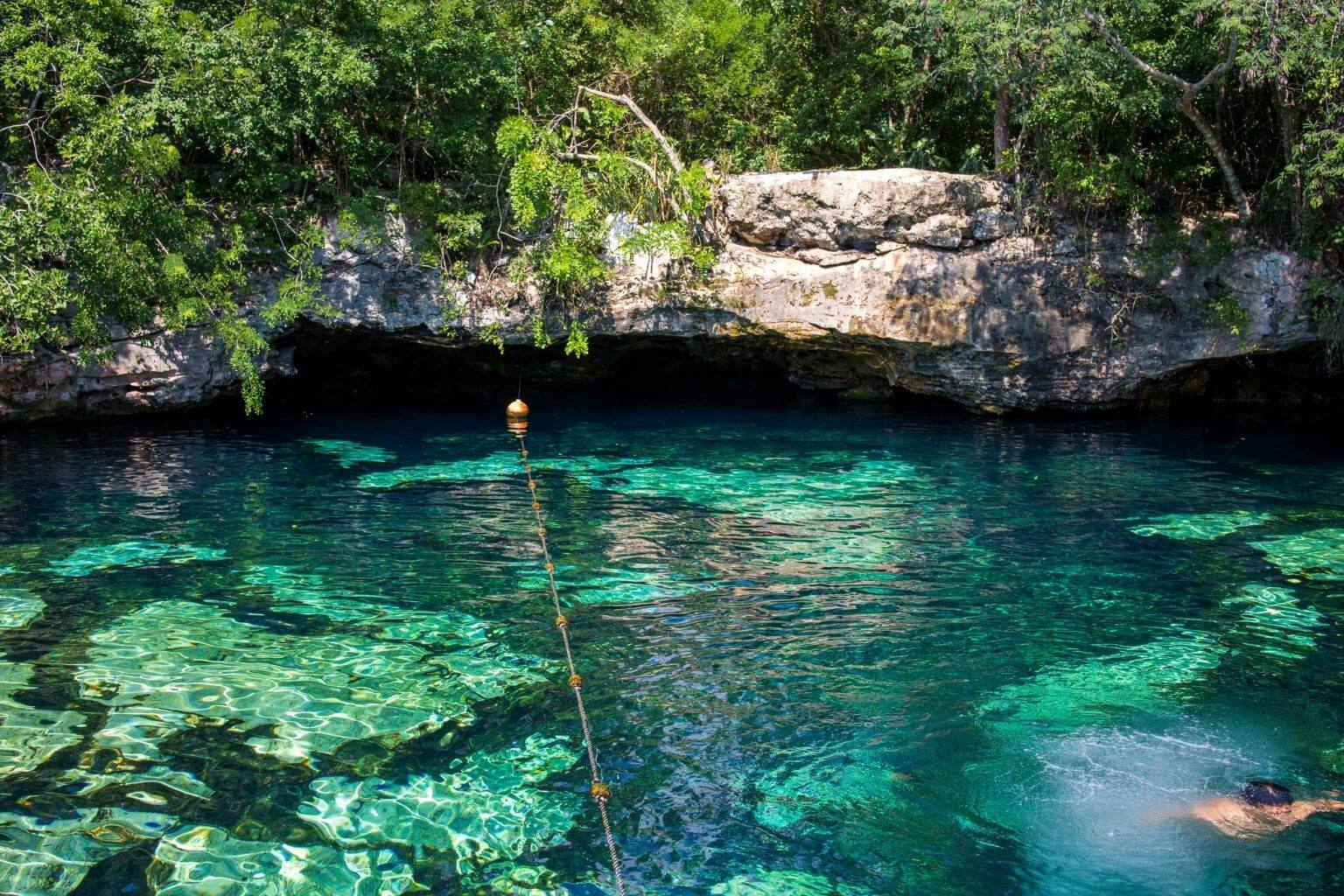
It tends to be less crowded than some of the others nearby like Cenote Azul and Ponderosa. Cristalino is located just a few minutes south of Puerto Aventuras and can be reached by car, taxi or colectivo. From the road, it’s just a short walk to the cenote. This is another open-type cenote that looks like a natural swimming pool. There are several mini caves to explore and areas where the sides of the cenote rise up offering a 15’ drop into the water below perfect for thrill seekers. There are bathrooms and shower facilities available as well as lockers and loungers for rent if you would like to spend a full day in this magnificent place. Cenote Cristalino is open daily 8am to 6pm.
Cenote Azul
Another open-style cenote, Azul is one of the best-known and most visited cenotes on our list. When people ask for the best cenotes near Puerto Aventuras for families with children, this is the one we immediately recommend first.
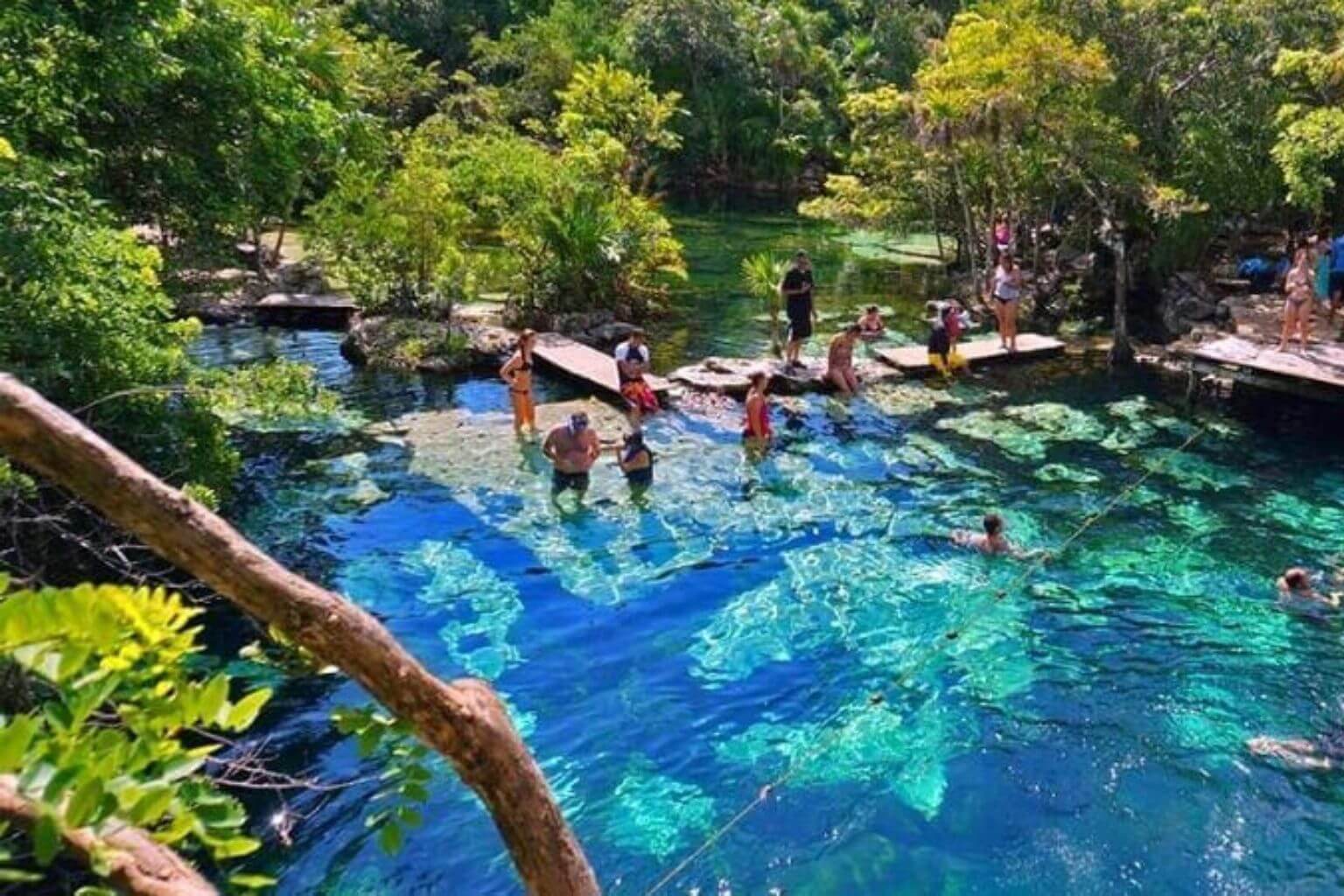
There are many shallow areas and rocks to stand on, perfect for young children experiencing their first cenote. Older kids may want to brave the 12’ cliff jump. As you would expect from the name Cenote Azul is known for its hypnotizing blue water. The snorkeling here is fantastic as there is a wide array of fish and other aquatic life to see. This is quite a large cenote site and while it is very popular, you can usually find a great spot to set up camp for the day if you come early in the morning, before the crowds and avoid Sundays. Cenote Azul offers lifejackets and snorkel gear. There are bathroom facilities and a small restaurant onsite. If you have never been to a cenote before, this might be the one to see first. Open daily 8:30 to 5:30pm.
Kantun Chi
Kantun Chi, located just moments from Puerto Aventuras, is a cluster of four unique cenotes, Kantun Chi, Zaskaleen, Uchil Ha and Zazil Ha. You can choose to visit the cenotes on your own or as part of a tour.
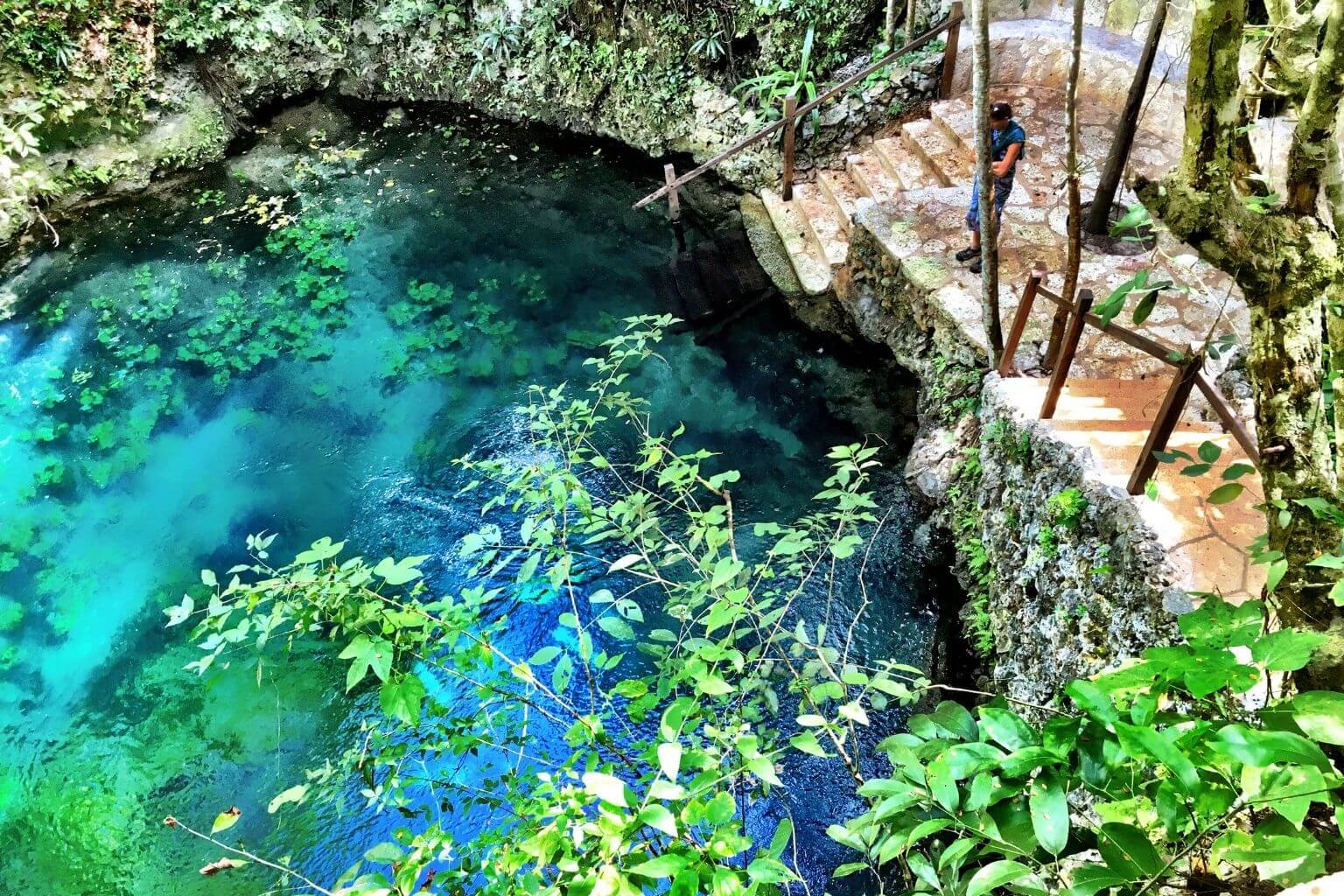
The Ecopark Kantun Chi has two tours, which include snorkel equipment and an experienced guide. There is a Grotto Adventure exploring the underground river system, caves and two mystical cenotes. There is also the Magic Waters option, which brings you to all four cenotes for snorkeling with a guide who will teach you about the Mayan culture and the flora and fauna that surrounds you. There are bathroom facilities, showers, changing rooms and hammocks to relax in. There is a very nice restaurant on site as well. All of this you can use whether you are part of a tour or just exploring on your own. The Kantun Chi park is open daily 9 am to 5 pm (6 pm during the summer). Come early to avoid tour groups.
Chikin Ha
There are actually three cenotes located in the Chikin Ha Aldea Maya just south of Puerto Aventuras. Visitors may swim in two of the cenotes, Chikin Ha and Xtabay. The third cenote, Taak-Bil-Ha is for viewing only and used for Mayan rituals.
There is even a temazcal. This is a park with paid options for rappelling, zip-lining, bike riding and tours but the experience feels less commercialized than some of the bigger adventure parks in the region. While there are tours and activities available you are also welcome to explore the jungle paths and swim in the cenotes on your own. Life vests are included in the basic admission but not required. We recommend water shoes or waterproof sandals for walking around the site and entering the water. Open 8:30am to 4pm. Closed Saturdays.
Cenote Dos Ojos
Dos Ojos or “Two Eyes” is located about 20 minutes south of Puerto Aventuras and is one of the more popular cenotes to visit. There are tours that you can join or just explore the area on your own. Dos Ojos is so-named because it is actually two cenotes connected by a 400-meter-long passageway. Dos Ojos is also connected to the Sac Actun System, the second longest unground cave system in the world.

The site is also famous for hosting the filming of the Imax documentary “Journey into Amazing Caves”. Both sinkholes feature remarkable stalactite and stalagmite formations, which make for breathtaking views both above and below the surface of the water. There is a large wooden platform at the main cenote making access to the cool waters easy. The main cenote is 33’ feet at its deepest but there are plenty of shallow areas and lifeguards on duty making this cenote site family friendly. There is a snack shack on site but there are also there are covered picnic areas where you can sit and enjoy your own lunch. This is one of the more stunning and more popular cenotes and also one of the most expensive. Still, for sheer beauty, Doj Ojos makes our list. Open daily 8am to 5pm. Life jackets are required and included in the admission price.
Cenote Nicte Ha
Cenote Nicta Ha is located about 20 minutes south of Puerto Aventuras, along the same road as Dos Ojos. This hidden gem is an open cenote with some cave portions still overhanging the water in places.
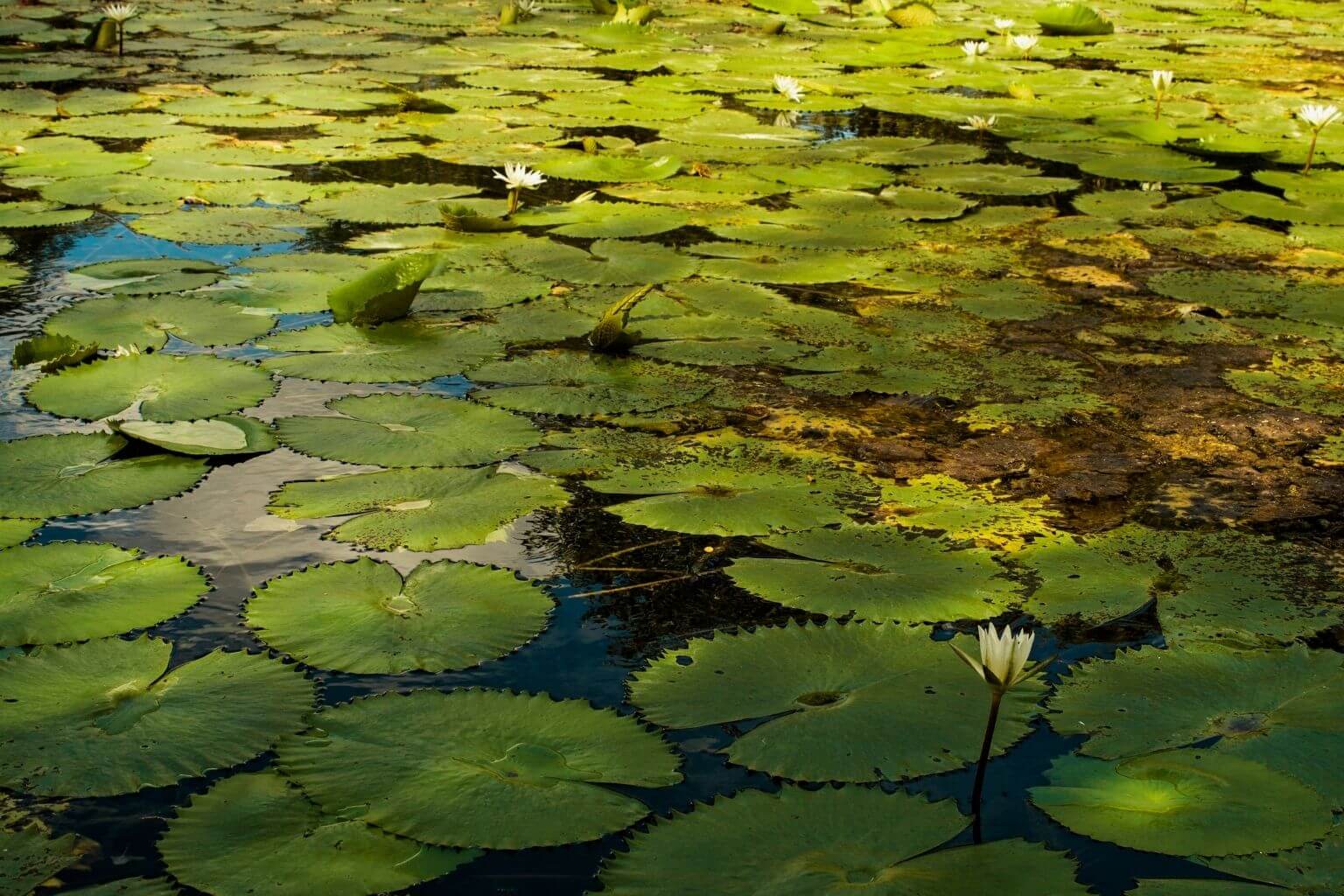
Nicte Ha is a smaller cenote that emerges from the jungle as a bright pool of aquamarine water surrounded by lush plants. You can spend an afternoon floating amongst the lily pads and snorkeling in the crystal clear water. There was a small deck area and wooden steps down to enter the water. There is also a small cliff to jump from. As most people tend to head straight for Dos Ojos, this lovely site is often overlooked and you may have the place all to yourself. You could easily see both cenotes on the same day trip. Bring your own gear and wear comfortable shoes for the walk from the ticket booth. Open daily 9am to 5pm.
Cenote Manati (Casa Cenote)
Located 20 miles south of Puerto Aventuras, in a seaside residential area called Tankha. It’s quite a bit off the highway so you may want to rent a car or take a taxi. If you are coming by taxi, you may want to direct the driver to bring you to Casa Cenote as it’s a well-known spot. Cenote Manati is an ancient cenote that resembles a lagoon. Water entry is quite easy from the large flat stones that line the shore. If you are up to it, you can swim up the canal a bit and let the strong current float you back to the open area.
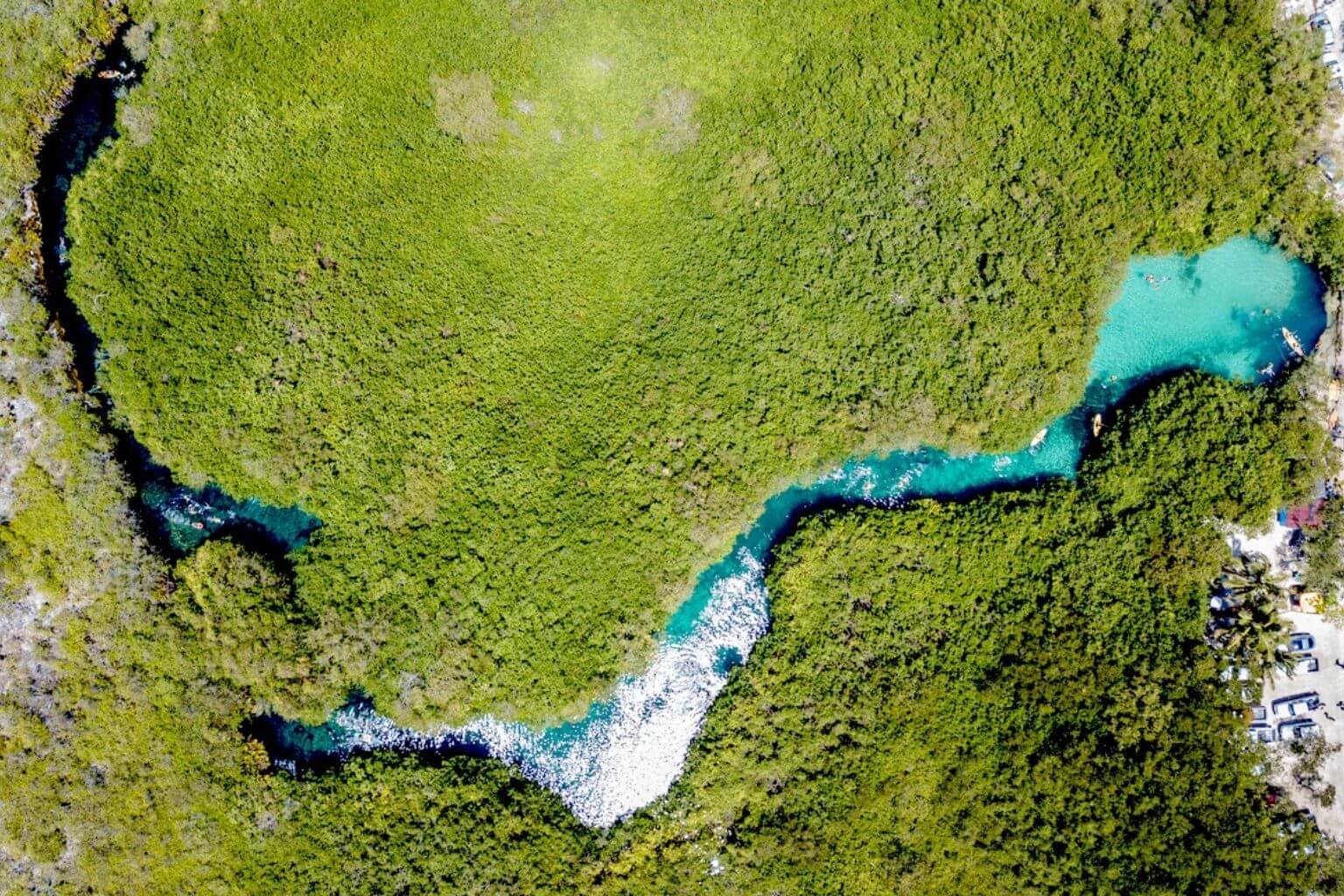
This cenote is quite close to the sea and the water can sometimes have a halcyon effect from the mix of salt and fresh water. Still, the snorkeling is great and you will be able to see quite a few species of fish, blue crabs and other aquatic creatures including one friendly crocodile. You can also rent kayaks and paddleboards to explore the cenote and canal surrounded by mangrove.
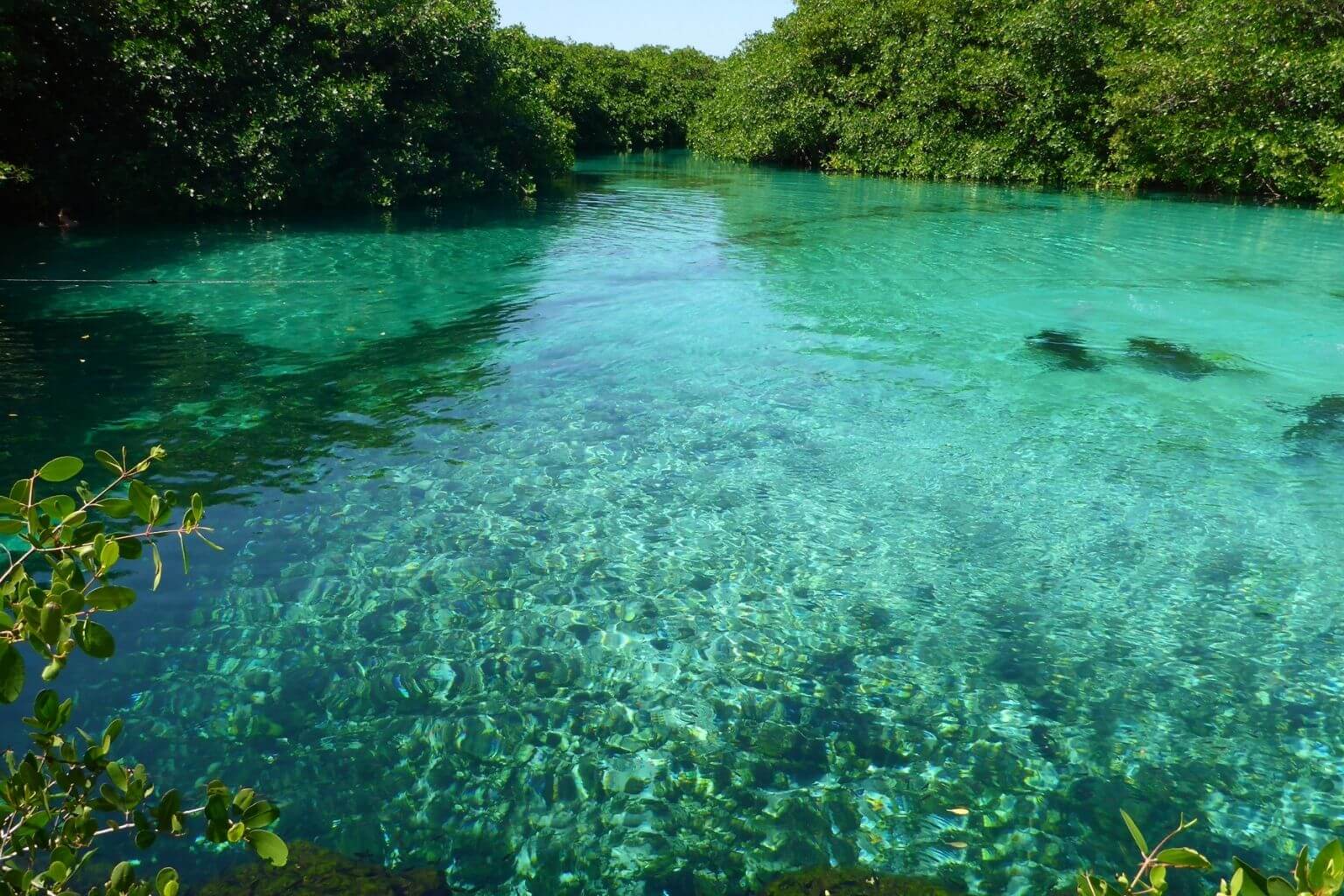
Across the street is Casa Cenote, which is a nice place to relax and have a beer or a bite to eat. While you are there, look for the “ojos de agua” where the freshwater from the cenote has traveled under the road and bubbled up to the surface of the ocean. This spot is unique in that you can snorkel in a cenote and in the ocean all in one go! Cenote Manati is open daily 9 am to 5 pm.
Once you have visited one or two of these spectacular Riviera Maya cenotes, you are certain to want to explore more and more. The “Ruta de Cenotes” stretching between Puerto Morelos and Leona Vicario, is dotted with dozens of cenotes that you can see on a nice day trip. Along the Coba road in Tulum, there are even more cenotes to discover.
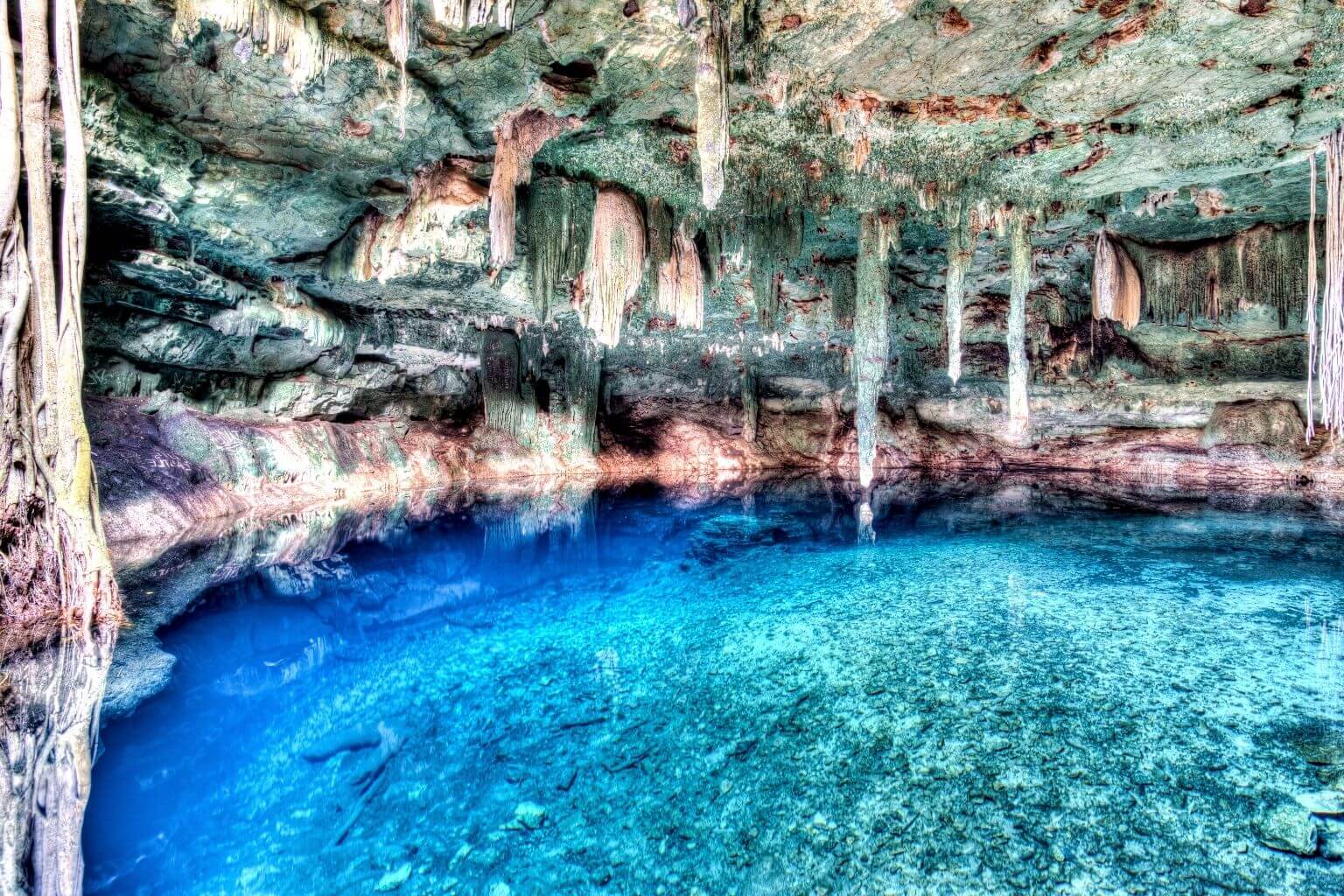
Regardless of which cenote you choose to visit, please be mindful of the environment. If you bring in any food items, be sure to dispose of any trash properly or bring it back out with you. Only use biodegradable sunscreen and insect repellent to protect the delicate ecosystem in and around the cenotes. Keep in mind, that these cenotes are not just beautiful. Their life-giving water is essential for not only the animals that inhabit the jungle but humans as well.

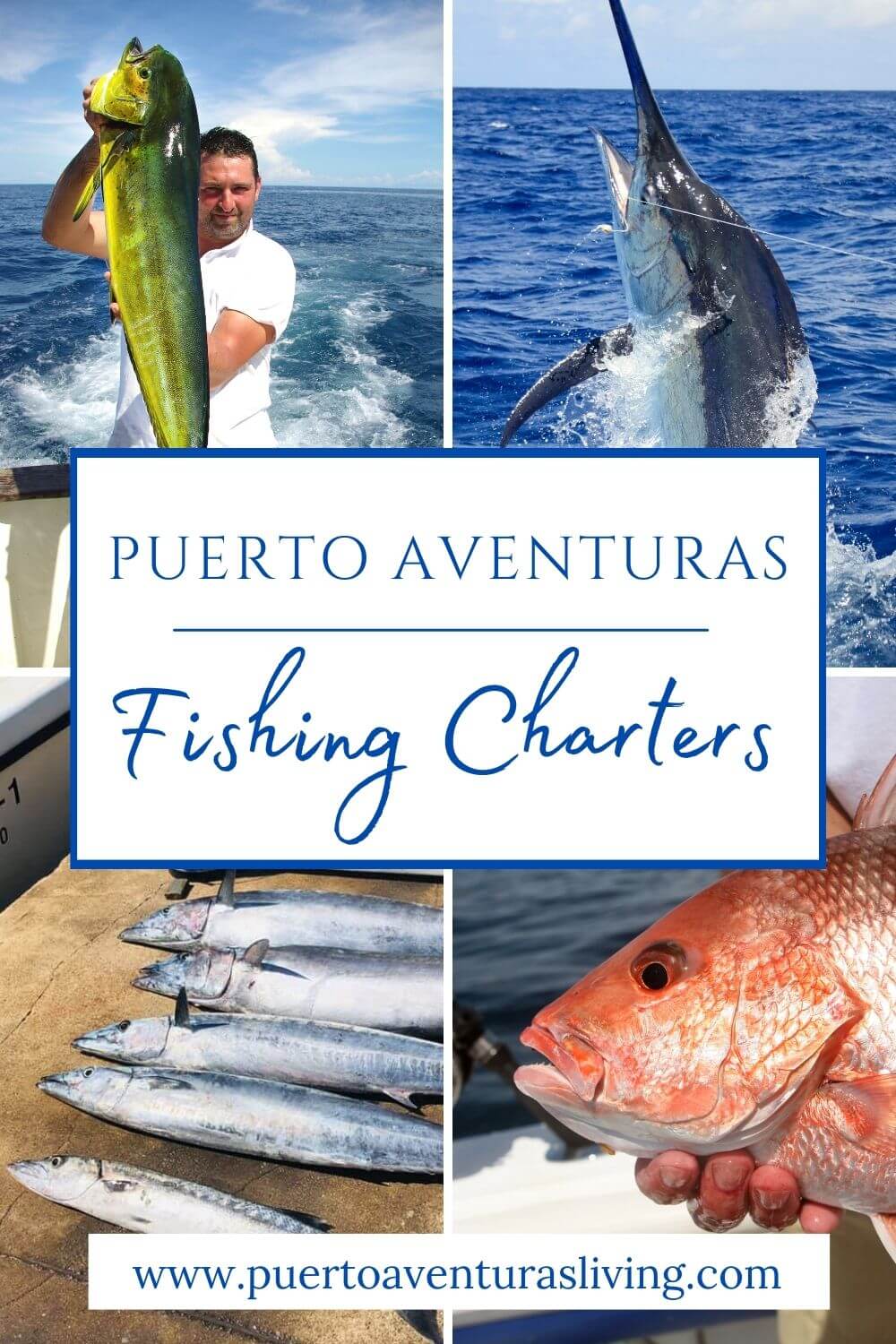
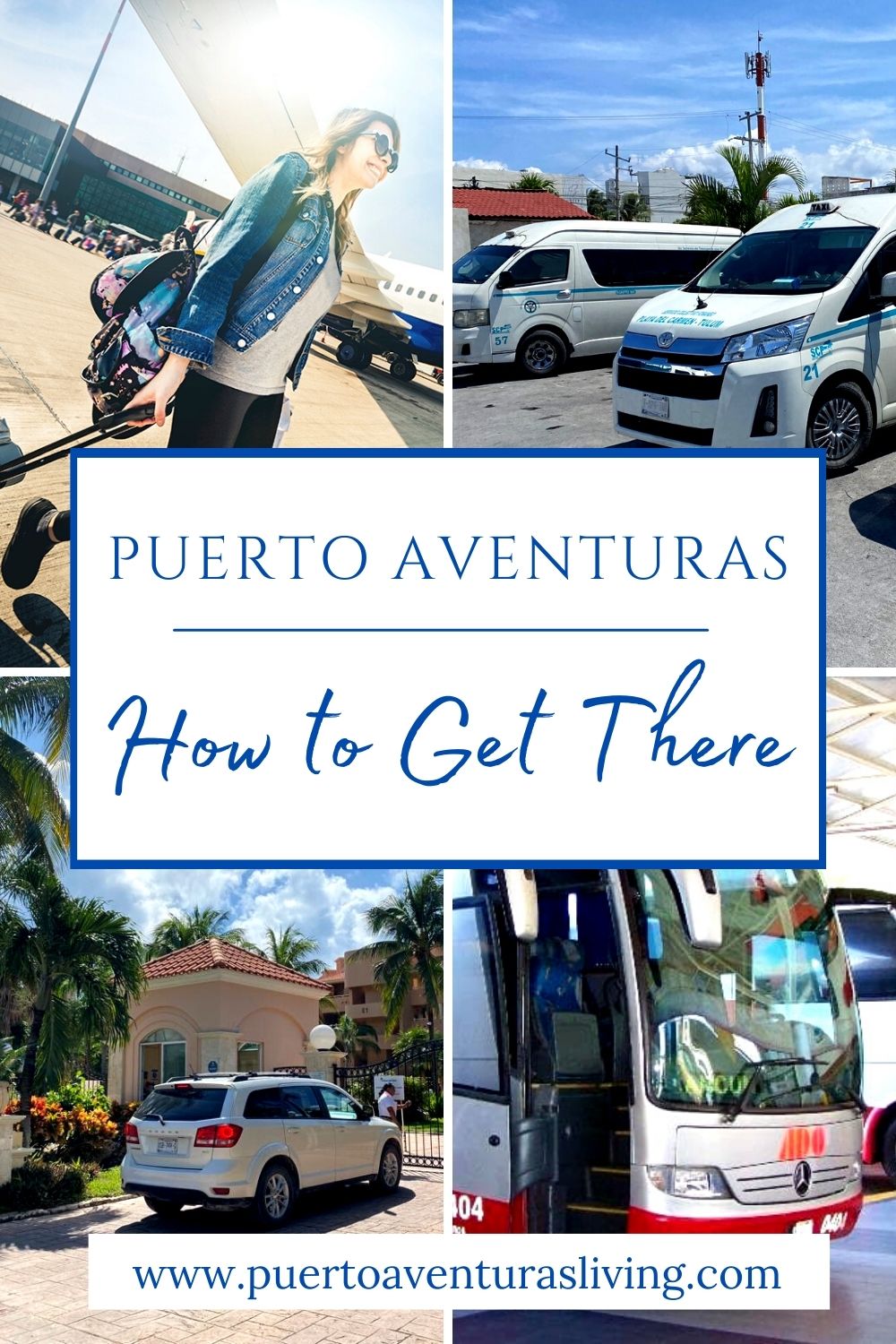


I love the cenotes in Riviera Maya and these near Puerto Aventuras look and sound amazing. I didn’t know how they were formed so that was really intriguing.
Wow, I had no idea that there were so many cenotes! Over 7000 is incredible! Seeing that blue, teal water for myself will be incredible! Thanks for the breakdown!
I’ve never heard of cenotes before reading this article! It sounds like there a quite a few places to check out the cenotes around Peurto Aventuras. Thanks for sharing your top recommendations!
WOW! Just wow! The photos and descriptions make me want to go and explore these right now. Thanks for the details to help me choose.
The cenotes of Riviera Maya are one and only! I have only visited one, but would love to explore them all – checking out the Cenote Ponderosa would be epic, no wonder it is called Jardin del Eden! Thanks for the inspiration